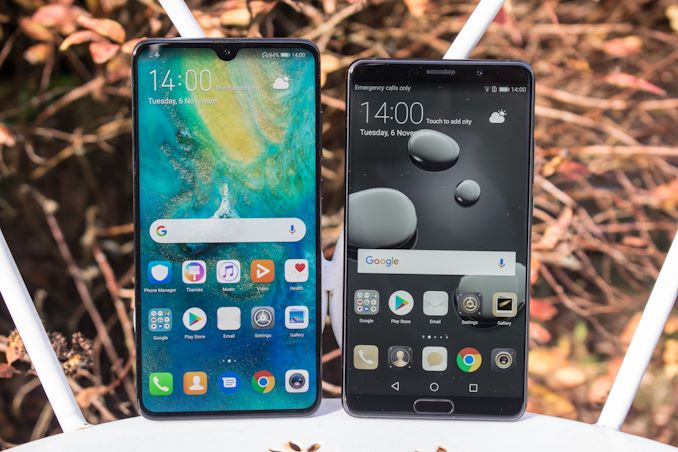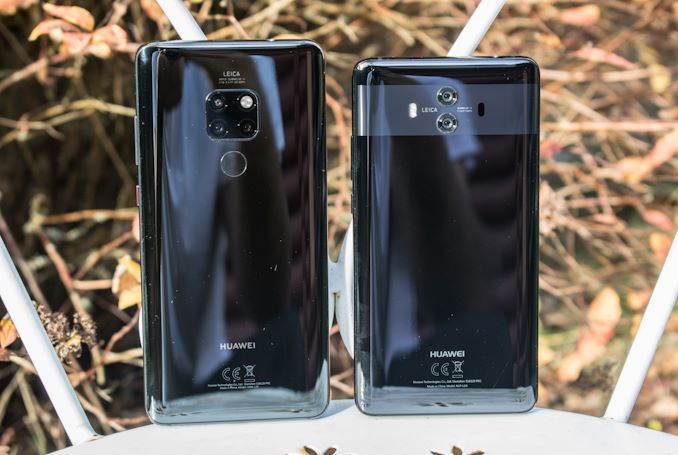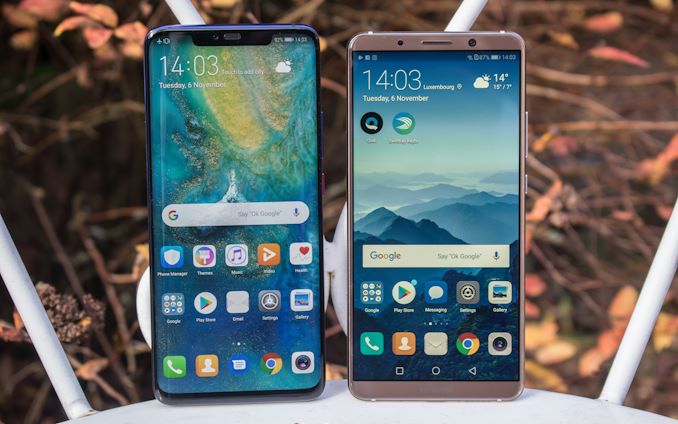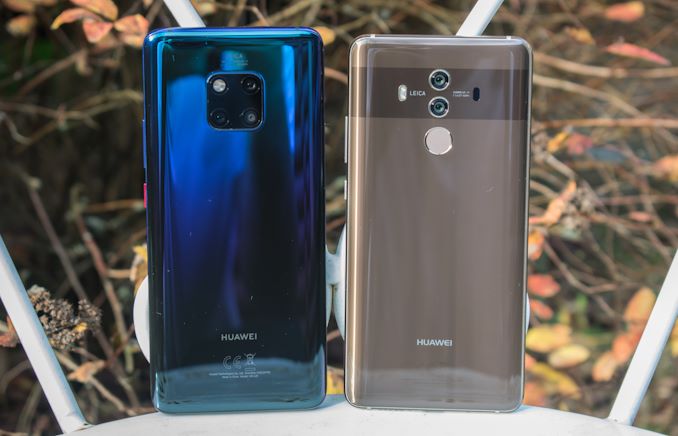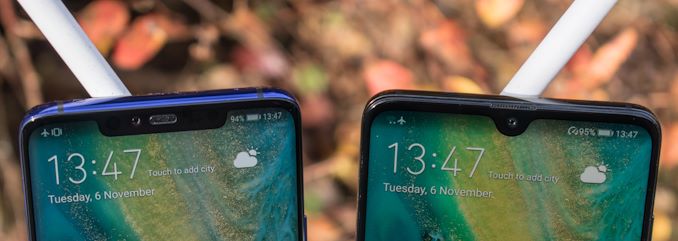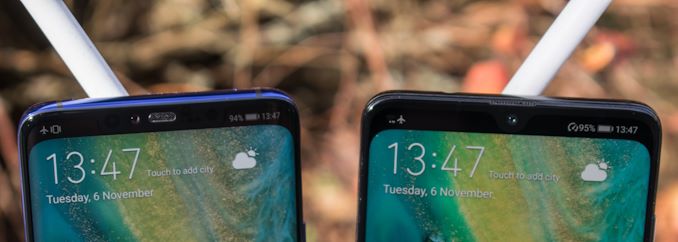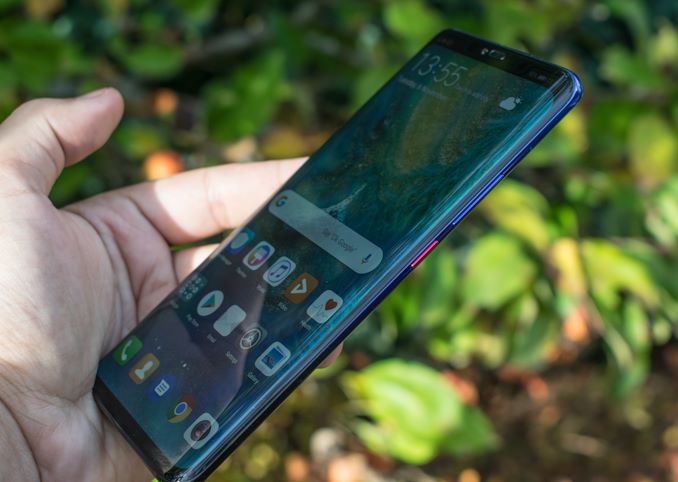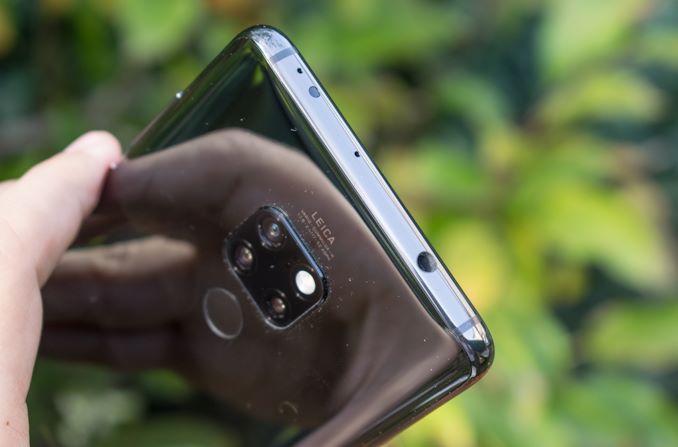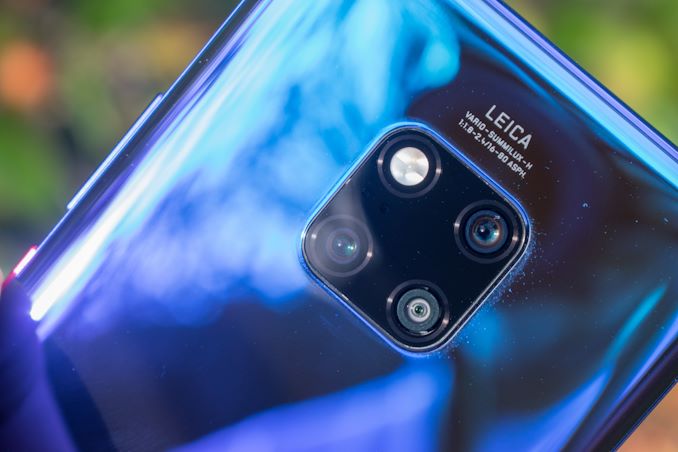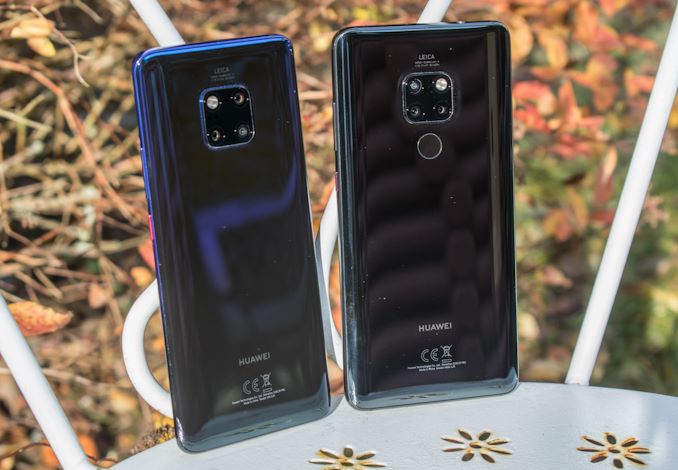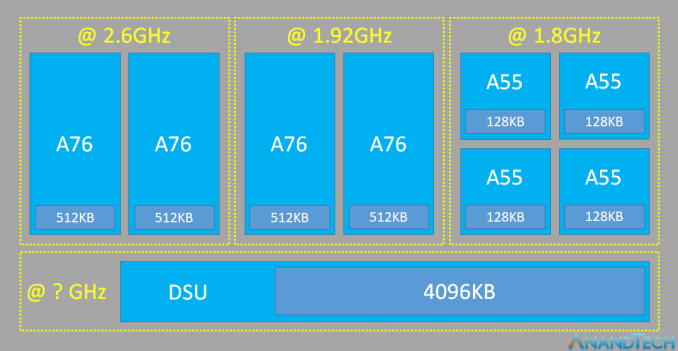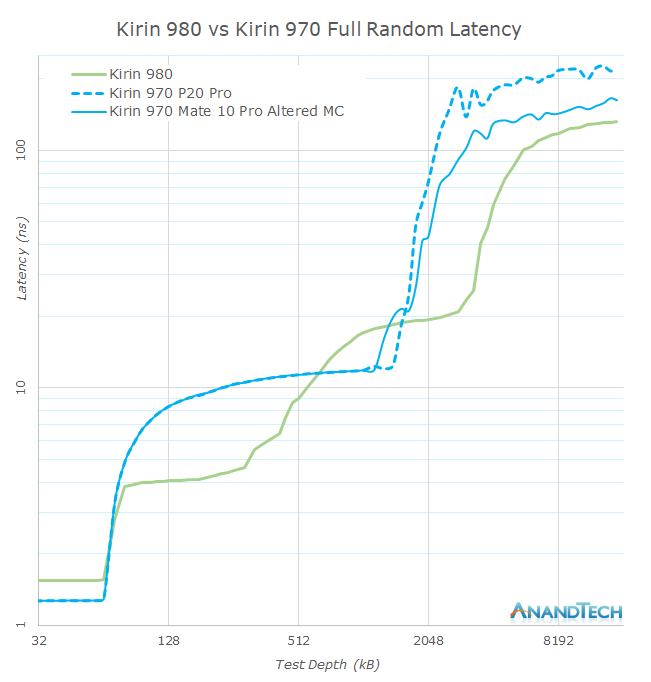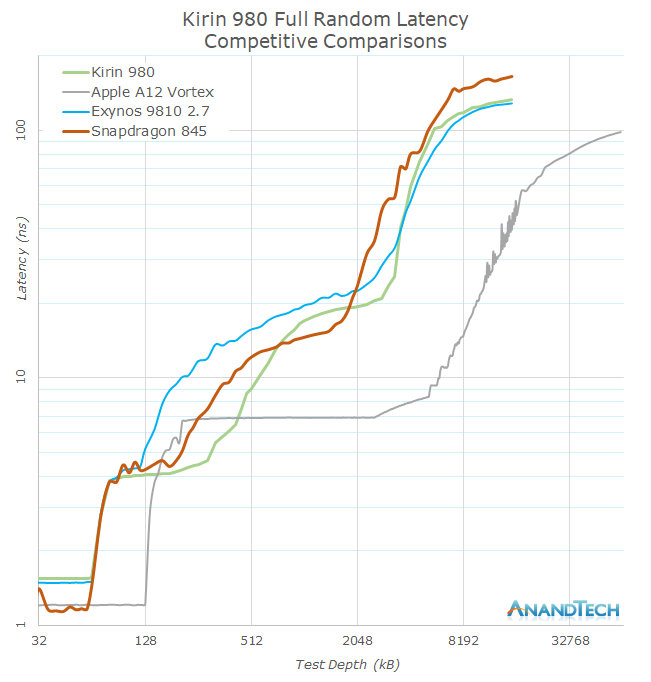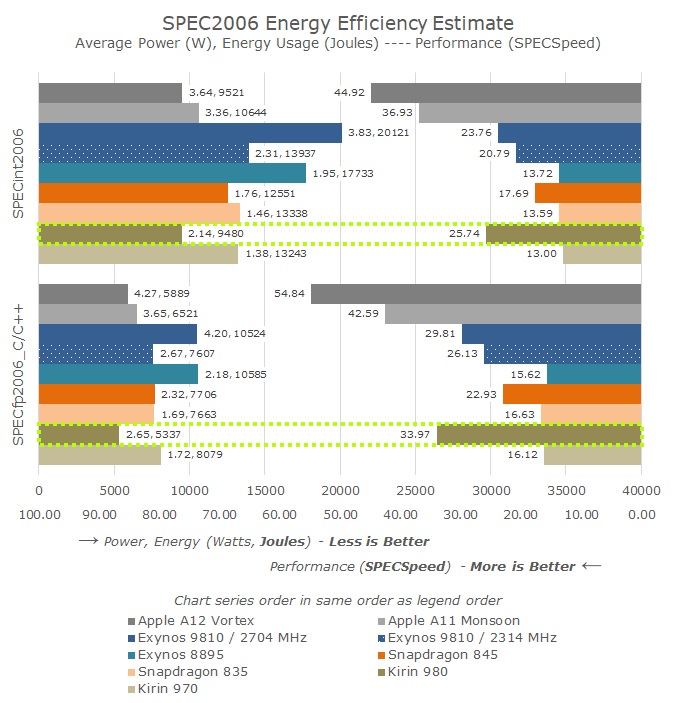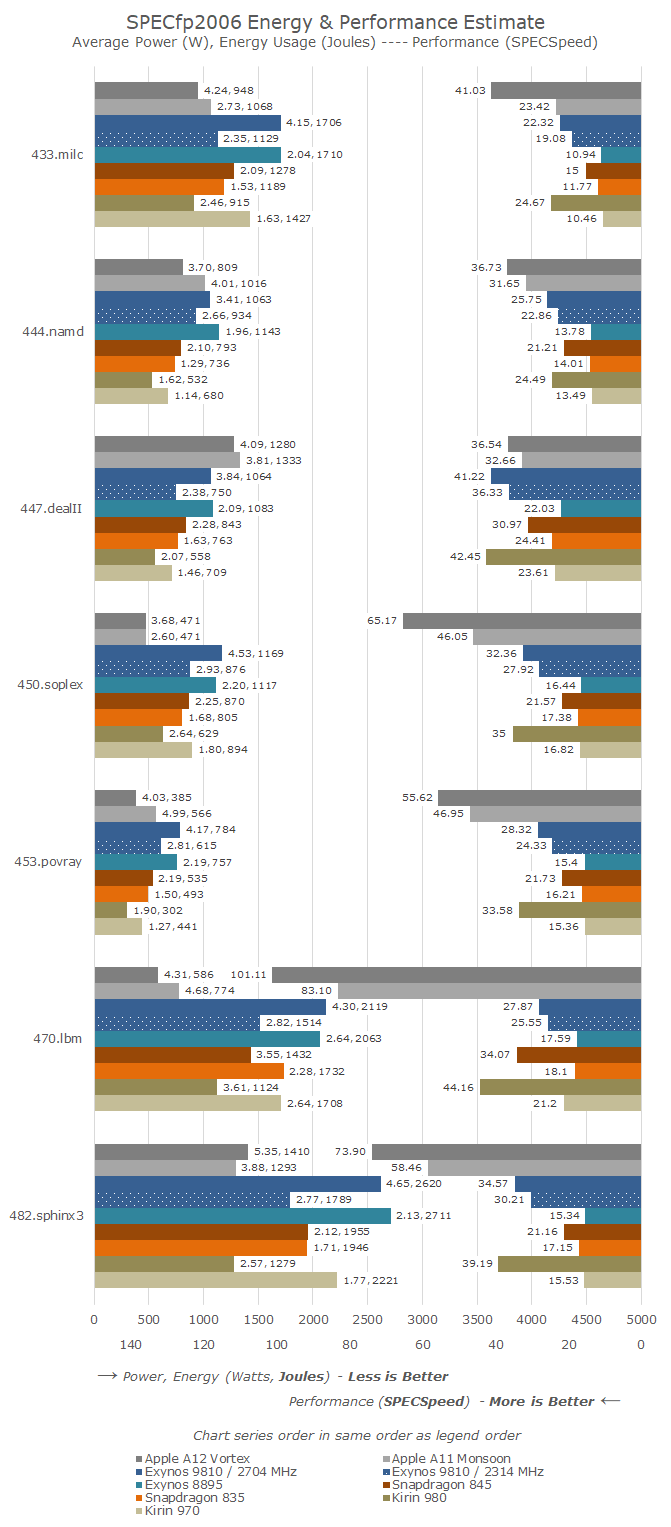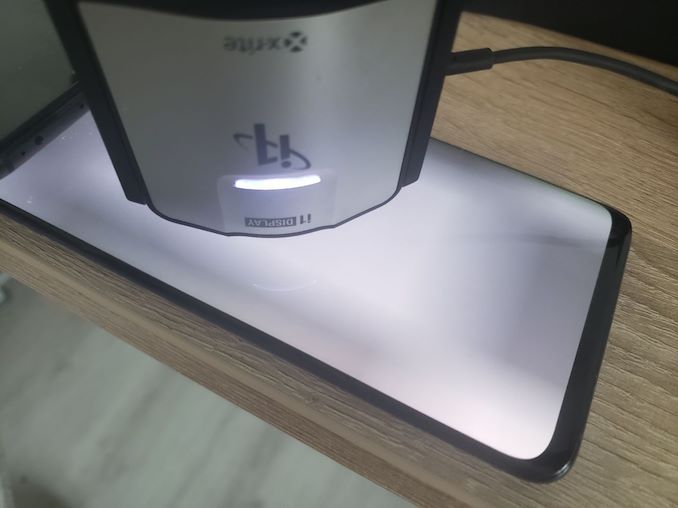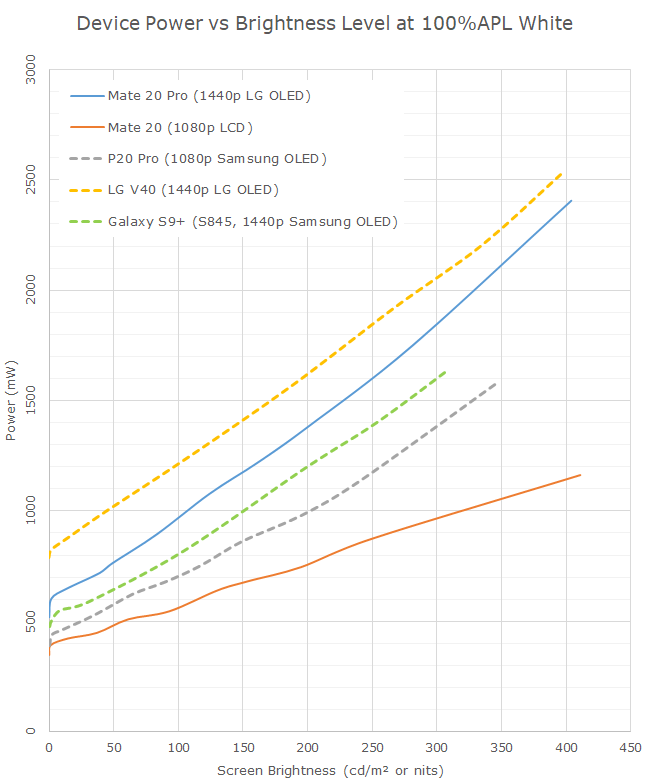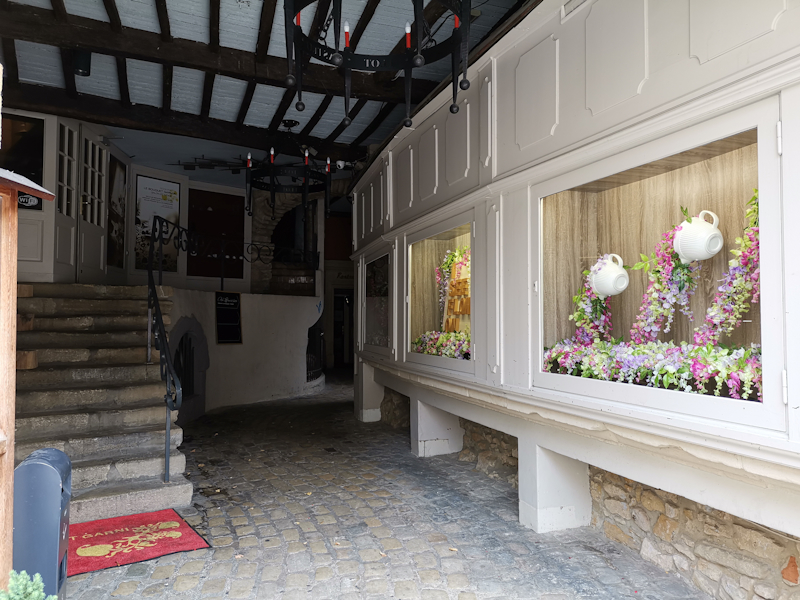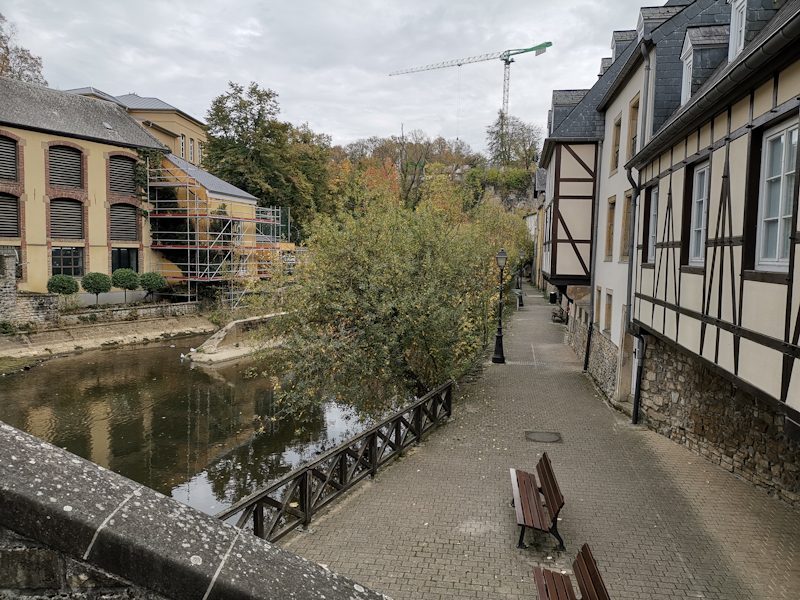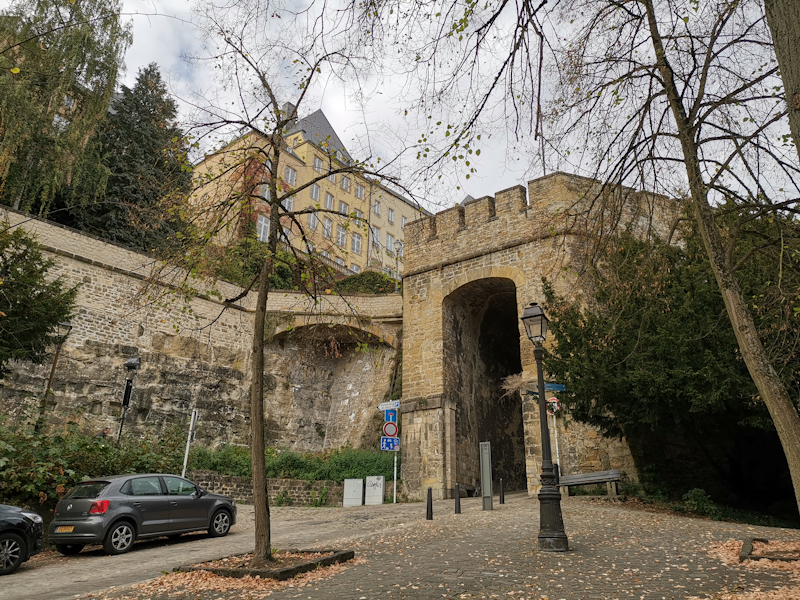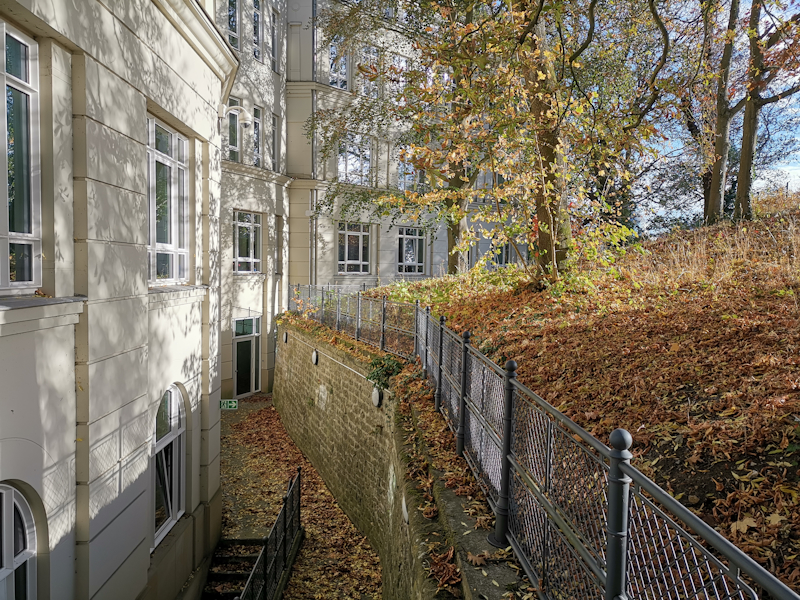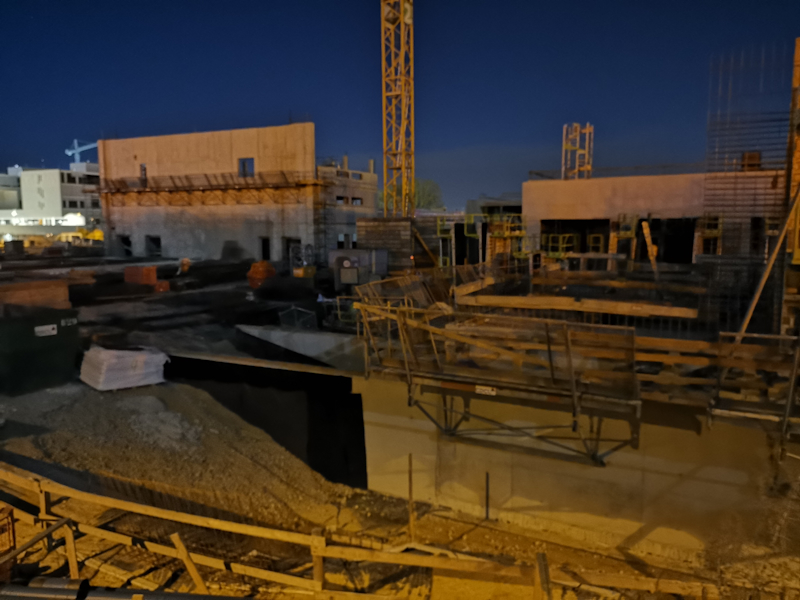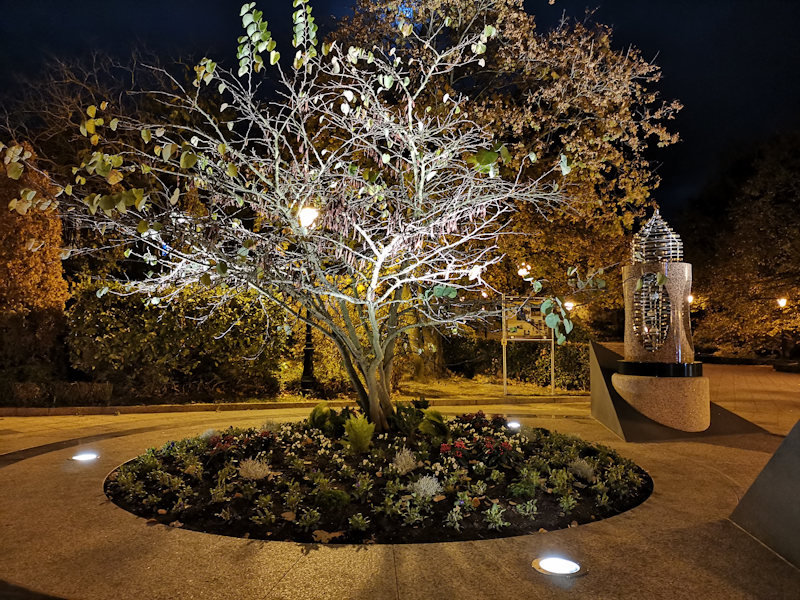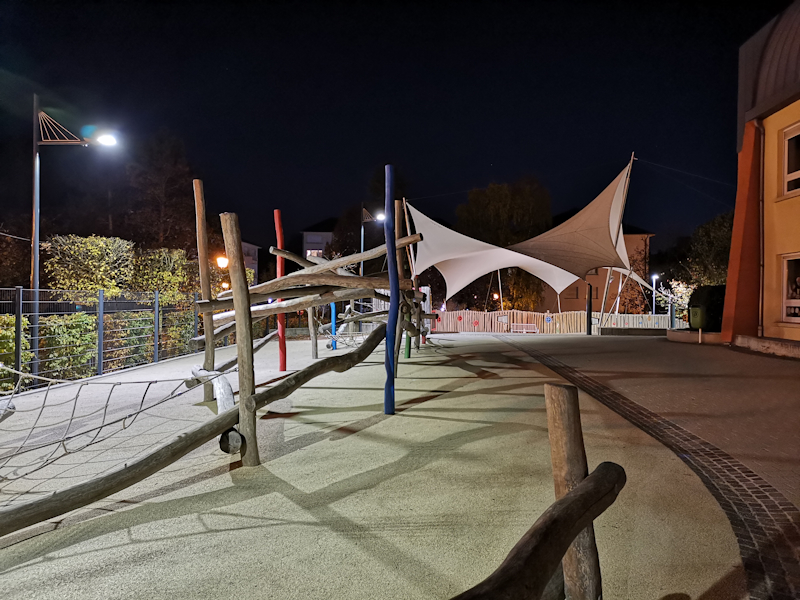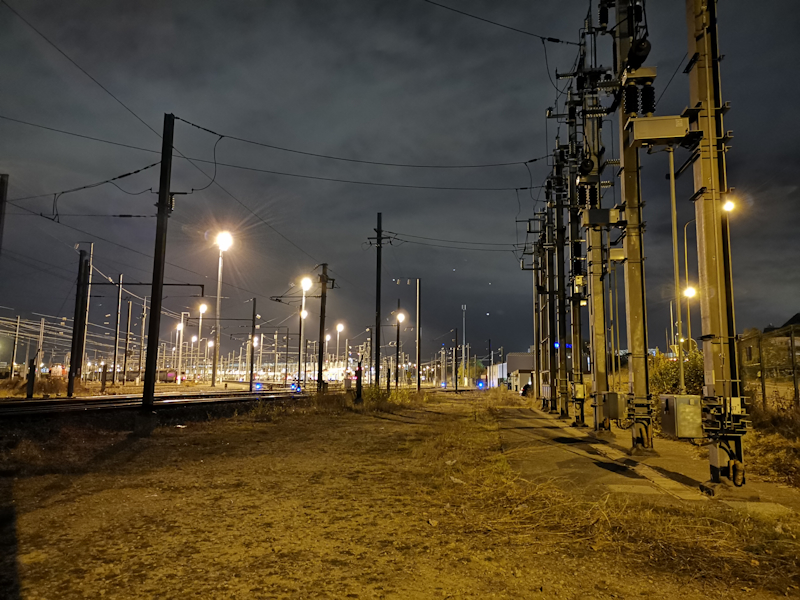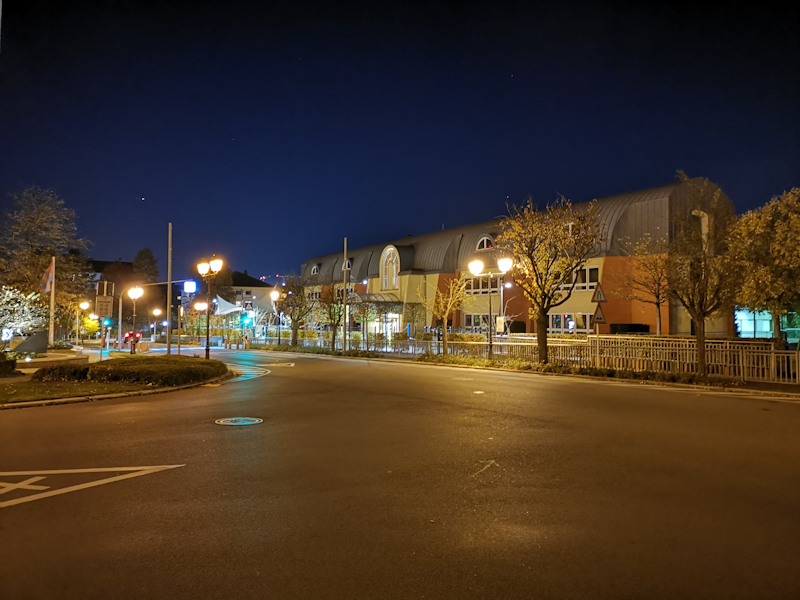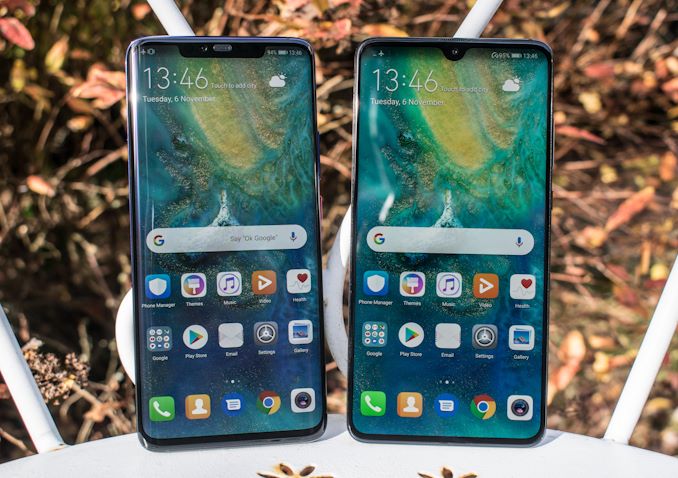
Original Link: https://www.anandtech.com/show/13503/the-mate-20-mate-20-pro-review
The Mate 20 & Mate 20 Pro Review: Kirin 980 Powering Two Contrasting Devices
by Andrei Frumusanu on November 16, 2018 8:10 AM EST- Posted in
- Smartphones
- Huawei
- Mobile
- Kirin 980
- Mate 20
- Mate 20 Pro
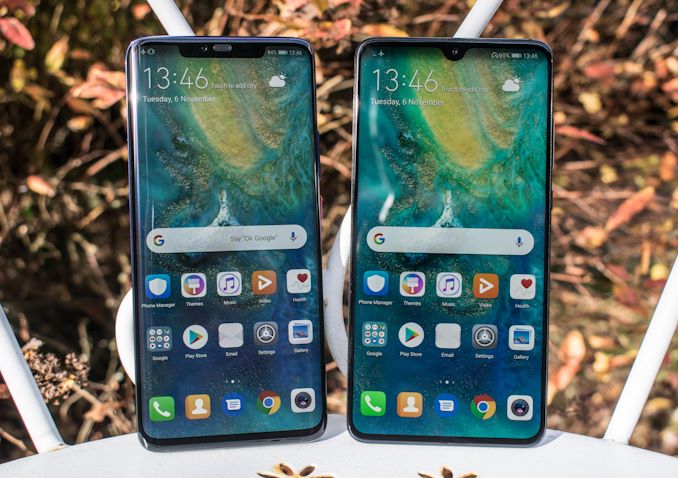
As far as handset vendors go, Huawei holds special importance to me. Their devices were among the first that I ever reviewed here on AnandTech, and the Mate series has been one that I’ve personally watched while it has evolved over the years. There’s been ups and downs in their products, but Huawei always showed a consistent amount of progress with each generation, raising the quality of the product, inching ever closer to making themselves a household name among smartphone vendors.
Today Huawei has surpassed Apple to being the #2 smartphone vendor worldwide, achieving a goal that they had presented as a strategy as early as back in 2015. Yet the company achieved this goal while facing huge struggles in the US market last year – to the point where now they are no longer actively trying to compete. When asked what the company’s strategy for the future were, the answer was relatively simple – make devices that were good enough that they naturally create user demand for them.
The Mate 20 and Mate 20 Pro are Huawei’s latest attempts to push the envelope in terms of creating symbolic flagship devices. In this review, we’ll go over all the aspects of the two new phones – and see if Huawei has managed to create something that is worth of your purchase.
Let’s start off with the specifications of both phones:
| Huawei Mate 20 Series | ||||
| Mate 20 Pro | Mate 20 | |||
| SoC | HiSilicon Kirin 980 2x Cortex-A76 @ 2.60 GHz 2x Cortex-A76 @ 1.92 GHz 4x Cortex-A55 @ 1.80 GHz |
|||
| GPU | Mali G76MP10 @ 720MHz | |||
| DRAM | 6GB LPDDR4X | 4GB LPDDR4X 6GB LPDDR4X |
||
| Display | 6.39" OLED 3120 x 1440 (19.5:9) DCI-P3, HDR |
6.53" RGBW LCD 2244 x 1080 (18.7:9) DCI-P3, HDR |
||
| Size | Height | 157.8 mm | 158.2 mm | |
| Width | 72.3 mm | 77.2 mm | ||
| Depth | 8.6 mm | 8.3 mm | ||
| Weight | 189 grams | 188 grams | ||
| Battery Capacity | 4200mAh 40W SuperCharge |
4000mAh 22.5W SuperCharge |
||
| Wireless Charging | Qi | |||
| + Wireless reverse charging | - | |||
| Rear Cameras | ||||
| Main | 40MP f/1.8 27mm equiv. FL |
12MP f/1.8 27mm equivl. FL |
||
| Telephoto | 8MP f/2.4 3x Optical zoom 80mm equiv. FL |
8MP f/2.4 2x Optical Zoom 52mm equivl. FL |
||
| Wide | 20MP f/2.2 Ulta wide angle 16mm equivl. FL |
16MP f/2.2 Ultra wide angle 17mm equivl. FL |
||
| Front Camera | 24MP f/2.0 | |||
| Dot-projector Flood illuminator IR camera |
- | |||
| Storage | 128 GB + proprietary "nanoSD" card |
|||
| I/O | USB-C | USB-C 3.5mm headphone jack |
||
| Wireless (local) | 802.11ac Wave 2 Wi-Fi Bluetooth 5.0 LE + NFC |
|||
| Cellular | Kirin 980 Integrated LTE (Category 21/18) DL = 1400 Mbps 4x4 MIMO 3x20MHz CA, 256-QAM (5CA no MIMO) UL = 200 Mbps 2x2 MIMO 1x20MHz CA, 256-QAM |
|||
| Splash, Water, Dust Resistance | IP68 (water resistant up to 1m) |
IP53 (no water resistance) |
||
| Dual-SIM | 2x nano-SIM | |||
| Launch Price | 128 GB: 1049€ | 4+128 GB: 799€ 6+128 GB: 849€ |
||
At the heart of both new flagships, we find Huawei’s new Kirin 980 chipset. Huawei is the only Android manufacturer that is able to take advantage of full vertical integration of silicon and handsets. The new Kirin 980 is an important chipset as it’ll power all of Huawei and Honor’s flagship devices for the rest of 2018 and 2019 - at least until the next generation is revealed. The Kirin 980 isn’t only important because of its use in Huawei’s own devices, but also because it’s the very first Arm Cortex-A76-based and Android-compatible 7nm SoC on the market. This means that whatever the new Kirin 980 brings to the table in terms of performance and power efficiency, will be largely representative of nearly all upcoming Android devices in 2019.
The Kirin 980 sports four Arm Cortex-A76’s – with a pair of them clocked in at 2.6GHz and another pair clocked at 1.92GHz. Accompanying them are four Cortex-A55 cores at up to 1.8GHz. To round off the CPU complex, the chipset is also the first to introduce Arm’s new Mali G76 GPU in a MP10 configuration running at up to 720MHz. We’ll be detailing the SoC in more depth in a dedicated page after we talk more about the design of the phones themselves.
Starting off with the “standard” Mate 20, we see quite a significant design shift from last year’s Mate 10.
The Mate 10 was a bit of an odd device design wise, as Huawei had opted to put a fingerprint sensor on the bottom front of the phone, even though previous Mate phones as well as its sibling the Mate 10 Pro also had it on the back.
The Mate 20 now goes back to a more “traditionally” located back fingerprint sensor, and also adopts the trend of having a near bezel-less design, sporting a very large 6.53” 18.7:9 2244 x 1080 LCD screen.
What I find most important about the new phone (that isn’t obviously showcased in the pictures) is the fact that the Mate 20 is ever so slightly narrower than the Mate 10, now coming in at a width of 77.2mm. The few millimetres of reduced width doesn’t seem much, but it makes a huge difference in terms of usability, and I vastly prefer the Mate 20’s new slimmer and more elongated form-factor.
When looking at the Mate 20 Pro against the Mate 10 Pro – we see an even more significant design shift.
The new Mate 20 Pro can only be described as Huawei taking note of Samsung’s Galaxy S8/S9 designs, as the new phone marks a striking resemblance in terms of the features that defined the ergonomics of Samsung’s phones. The Mate 20 Pro is thus Huawei’s first phone adopting a curved screen as well as a curved back. The screen is an OLED, coming in at a diameter of 6.39” and is also finally Huawei’s first phone to push beyond 1080p – coming with a 3120 x 1440 panel with a very elongated aspect ratio of 19.5:9.
Similarly to the Mate 20, the Mate 20 Pro also slightly reduces the width of the phone from its predecessor, the Mate 10 Pro. The new unit is now 72.3mm wide, making it a little over a millimetre narrower than a Galaxy S9+. Combined with the new curved display and curved back, this creates an in-hand feel that is significantly more comfortable than any past Huawei device that I’ve come to use – and for me personally this is also as near to a perfect form-factor that I’ve encountered.
What really stood out for me is the build quality of the Mate 20 Pro. This is by far Huawei’s best built phone, as it just feels incredibly solid while keeping a flowing design on all its sides. I think the fact that Huawei doesn’t use a seal ring around the display glass is what gives the phone an edge in terms of feeling. Overall it’s very obvious that Huawei took design inspirations from Samsung here – but I absolutely don’t blame them for it, as imitation is the best form of flattery, and Huawei executed the ergonomics perfectly on the Mate 20 Pro.
Both the Mate 20 and Mate 20 Pro’s displays continue with the trend of using display notches. The Mate 20 uses a new minimalistic “tear drop” notch design that houses the front camera as well as hides the front sensors just above and left of the camera lens, along with the earpiece grill above them all. I’ve never really had issues with Huawei’s notches (As reviewed on the P20 and P20 Pro), and the Mate 20’s new design also didn’t bother me much. As is usual, Huawei’s software is still able to black out the notification bar in order to hide the notch, and I had this enabled in daily usage.
The Mate 20 Pro’s notch on the other hand, is something of a first for Android phones. Here Huawei is very much taking note of Apple’s iPhone X/XS notch – not only in terms of design, but also in terms of actual functionality. The new wider notch houses three new sensors/modules: A dot projector, a flood illuminator, as well as an IR camera. This enables the Mate 20 Pro to sport essentially the same fast, reliable and secure face unlocking methodology as Apple’s FaceID.
The wider notch unfortunately did come as a compromise, as it’s at this point that I thought the notification bar lacked enough space to show the more relevant status icons, and the OS will overflow status icons to the left “ear”, which is usually dedicated to notification icons.
I’m not a big user of face unlocking, but Huawei’s implementation looks to be seamless, fast and reliable. The big surprise for the Mate 20 Pro is that featuring face unlocking is not a replacement for fingerprint unlocking, but rather just an option. You might have noticed that there’s no fingerprint sensor on the back, and that’s because the Mate 20 Pro houses it under the screen on the front of the phone. Again, the implementation is good in terms of unlocking reliability and accuracy, although I would had hoped it would be just a tad faster. Also what I feel is missing is some better (or any) haptic feedback when using the sensor. If you chose not to use the fingerprint sensor or fall back to a regular passcode unlock method, it also becomes sort of a waste – here I would have hoped Huawei would at least use it as regular button in the same way that Samsung does on the S8 and S9.
On the bottom of the phones, there’s a surprising lack of a speaker grill on the Mate 20 Pro. Here the sound comes out of the USB-C port, which is very weird. Plugging a cable obviously muffles the sound significantly, so don’t expect to play back music while charging the phone to be something viable. Also on the bottom we find the SIM tray and microphones.
On the Mate 20, we do find the speaker grill, however the phone is only IP53 certified, as opposed to the IP68 rating of the Mate 20 Pro. Unfortunately this is the only speaker on the Mate 20, as the earpiece doesn’t serve as a stereo tweeter. The SIM tray on the Mate 20 is relegated to the left side of the phone.
One thing the Mate 20 does have that the Mate 20 Pro doesn’t is a 3.5mm headphone jack. Again Huawei’s decision to give the regular model a jack while removing it from the Pro model just perplexes me – again a situation where a vendor tries to portray the removal of a feature as some kind of benefit.
Both Mate 20 and Mate 20 Pro still come with an IR transmitter on the top of the phones, able to control various appliances with it.
Finally, the centre-piece on the back of both phones are the cameras: The Mate 20’s are along with the V40 one of the rare new generation of devices which feature the trifecta of wide-angle, regular, as well as telephoto camera modules. Huawei houses these in a square design layout, along with the flash LED inside the fourth cut-out. Huawei wanted this design to be unique to them, and something that would be instantly recognisable and attributed to the company’s devices.
The camera hardware itself is quite a specification mess, as the two phones don’t share a single module between them. The Mate 20 features a 12MP main camera with an f/1.8 aperture, alongside a 2x optical zoom 8MP f/2.4 module, and a 16MP f/2.2 wide angle unit. The Mate 20 Pro’s camera configuration is more familiar, as the 40MP f/1.8 main camera as well as the 3x optical zoom 8MP f/2.4 module look to be identical to the ones found in the P20 Pro – here the addition is the new 20MP f/2.2 wide angle module. We’ll be going into more depth about the camera in the dedicated section later in this review.
Overall, the Mate 20 and Mate 20 Pro both a represent quite a design shift from Huawei and do promise a slew of features. Build quality is definitely a plus of the new devices, especially for the Mate 20 Pro. Moving on to the internals of the devices, we’ll inspect in more detail the new generation hardware of both phones to see if they live up to their promises.
The Kirin 980 - A Recap Overview
The Kirin 980 is the follow-up to last year’s Kirin 970. In many ways, the Kirin 980 is a much more significant chip than the previous generation chipsets from Huawei. The one thing that didn’t make the Kirin 960 and 970 as attractive, was their release schedule. The Kirin 960 suffered from being released on a 16FFC manufacturing node in a year where Qualcomm and Samsung released 10LPE SoCs – and this disadvantage for the Kirin 960 was most notable in the power and efficiency of the chipset, and was directly translated into devices which lagged behind the competition.
The Kirin 970, while closing the gap in terms of manufacturing node, on the other hand wasn’t able to catch Arm’s newest generation CPU designs due to its earlier design cycle. This meant that the chip still had to make due with Cortex A73’s versus Qualcomm’s competing Snapdragon 845 which was able to take advantage of the new Cortex A75 and A55 improvements.
This generation, HiSilicon was able to finally get manufacturing and IP design back in sync, and the Kirin 980 looks to repeat the success of the Kirin 950 from a few years ago.
| HiSilicon High-End Kirin SoC Lineup | |||
| SoC | Kirin 980 | Kirin 970 | Kirin 960 |
| CPU | 2x A76 @ 2.60 GHz 2x A76 @ 1.92 GHz @ 512KB L2's 4x A55 @ 1.80 GHz @ 128KB L2's 4MB DSU L3 |
4x A73 @ 2.36 GHz 4x A53 @ 1.84 GHz 2MB L2 |
4x A73 @ 2.36GHz 4x A53 @ 1.84GHz 2MB L2 |
| GPU | ARM Mali-G76MP10 @ 720 MHz |
ARM Mali-G72MP12 @ 746 MHz |
ARM Mali-G71MP8 @ 1037MHz |
| LPDDR4 Memory |
4x 16-bit CH LPDDR4X @ 2133MHz 34.1GB/s |
4x 16-bit CH LPDDR4X @ 1833 MHz 29.9GB/s |
4x 16-bit CH LPDDR4 @ 1866MHz 29.9GB/s |
| Storage I/F | UFS 2.1 | UFS 2.1 | UFS 2.1 |
| ISP/Camera | New Dual ISP +46% speed 10-bit pipeline |
Dual 14-bit ISP | Dual 14-bit ISP (Improved) |
| Encode/Decode | 2160p60 Decode 2160p30 Encode :( |
2160p60 Decode 2160p30 Encode |
1080p H.264 Decode & Encode 2160p30 HEVC Decode |
| Integrated Modem | Kirin 980 Integrated LTE (Category 21/18) DL = 1400 Mbps 4x4 MIMO 3x20MHz CA, 256-QAM (5CA no MIMO) UL = 200 Mbps 2x2 MIMO 1x20MHz CA, 256-QAM |
Kirin 970 Integrated LTE (Category 18/13) DL = 1200 Mbps 5x20MHz CA, 256-QAM UL = 150 Mbps 2x20MHz CA, 64-QAM |
Kirin 960 Integrated LTE (Category 12/13) DL = 600Mbps 4x20MHz CA, 64-QAM UL = 150Mbps 2x20MHz CA, 64-QAM |
| Sensor Hub | i8 | i7 | i6 |
| NPU | Dual @ >2x perf | Yes | No |
| Mfc. Process | TSMC 7nm | TSMC 10nm | TSMC 16nm FFC |
The new chipset sports Arm’s newest generation Cortex A76 CPUs: We covered the A76 earlier in the year, and the new Arm CPU represents a from the ground-up newly designed microarchitecture that promises great leaps in terms of performance, all while maintaining power efficiency.
The CPU complex is based on Arm’s DynamIQ cluster architecture, and we find eight cores all in all. In terms of performance cores, we find two pairs of Cortex A76’s: One pair clocks at up to 2.6GHz, while the other pair clocks at up to 1.92GHz. HiSilicon clocks the two pairs differently for two reasons: First of all, the new A76 core does go to higher power levels than previous generation cores. This means that in a mobile smartphone design, running the four cores at maximum frequency is no longer something that is feasible as it would go beyond the sustainable TDP of the platform. In order to counter-act this, the four cores are split into two clock and voltage planes, fully taking advantage of Arm’s DynamIQ cluster allowing for this. Thus, this configuration still allows for some of the cores to achieve the maximum single-threaded performance, all while reducing the power from the other pair, to remain within reasonable TDPs.
Another advantage of this configuration is that in mixed workload scenarios, the two pairs can operate at different efficiency points independently from each other, and this would allow for energy savings in workloads where there’s either one or two high-load threads, alongside some more medium load threads that would then all onto the lesser clocked A76 pair.
Alongside the four A76’s, we find four Cortex A55 cores that are dedicated for high efficiency and lower-load workloads.
In terms of cache hierarchy, HiSilicon opted for the maximum configuration for the Cortex A76’s, configuring both pairs with 512KB of L2 cache for each core. The A55 cores sported a more mid-sized 128KB L2 caches for each core. Finally, the DSU is configured with a 4MB L3, which is double the size of the previous L2 of the Kirin 970, and also double the size of the L3 of the Snapdragon 845.
A very small flagship SoC
ChipRebel is a new player in the die shot imaging business trying to get more exposure. Most notably I was impressed by the quality of their free A11 die shot last year. I’ve been talking to the folks over there and asked them what they had in plan – and fortunately enough they were able to look into publishing a teaser die shot of the Kirin 980 on their blog, alongside a teardown of the Mate 20 as well as their commercial high-resolution poly image.
I’ve already posted a quick analysis in a dedicated pipeline post last week, but let’s go over the details of the die shot again:
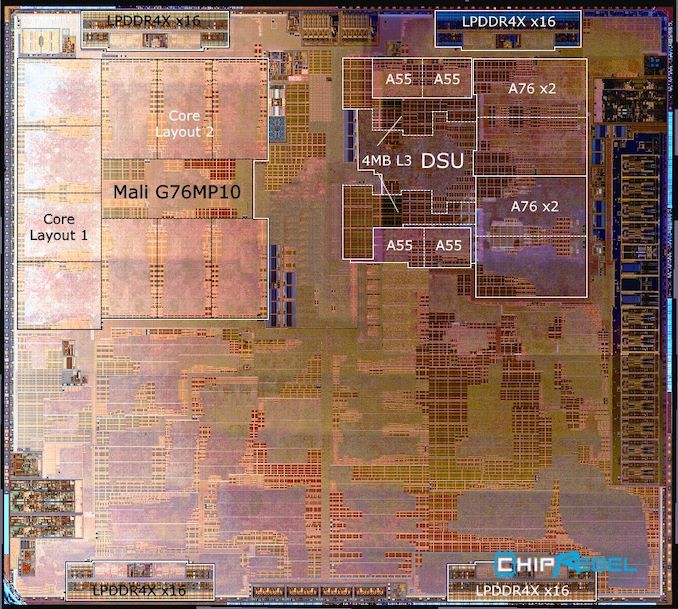
Die shot credit: ChipRebel
Again, the biggest surprise here comes in terms of the overall die size of the Kirin 980, coming in at a meagre 74.13mm², which represents a 30% reduction of last year’s Kirin 970, which came in at 96.72mm². HiSilicon uses the highest flagship Kirin SoCs in a much wider range of smartphone tiers than what we’re used to, say, Qualcomm’s or Samsung’s SoCs. As such we see a lot of Honor mid-range to “premium” devices sporting the chipsets. Thus it’s quite natural that HiSilicon wants to keep the die size to a minimum, and to extract the best value possible out of the new generation process node. Still, the small die size does come as quite a surprise, and it looks like there’s room to grow in terms of a follow-up to the Kirin 980 on the same process node.
On the top left corner we can see the new Mali G76MP10 GPU. The Mali G76 drastically differs from past generation Arm GPUs in that it essentially doubles the computational capabilities of each core – in effect that one could say that the new MP10 core configuration in the Kirin 980 is about equivalent to a MP20 of the previous generation – microarchitectural improvements aside. Here HiSilicon has kept the GPU to a size of 11.97mm², among the smallest configurations we’ve seen from the vendor, and about in line with what usually Qualcomm dedicates to its Adreno GPUs in terms of block size.
On the top right, we see the CPU complex we’ve previously discussed. Here we identify the four Cortex A76 cores, with distinctive grouping into two different pairs. The distinction between the two pairs here is due to them having different physical implementations: The high frequency pair is likely synthesized to be able to achieve a higher frequency with a greater cost in power, while the lower frequency pair is optimised for power consumption, only able to achieve a lower maximum frequency.
In terms of size, the Cortex A76 cores are still largely very tiny. With the 512KB per-core L2 cache included, an A76 core measures a meagre 1.26mm², a lot smaller than the Apple A12’s Vortex core (without L2) which comes in at 2.07mm², and also a fraction of the size of Samsung’s 10nm Exynos M3 Meerkat core with the same size L2, which came in at 3.5mm² (2.52mm² without the L2).
Improved memory latencies
The memory subsystem of a SoC is fundamental to the performance of its IP blocks. The Kirin 970 here suffered a bit as it seemingly had some issues when operating at higher clock speeds, and why Huawei had opted by default to reduce the frequency in its devices. This resulted in some performance degradations, especially in memory latency sensitive workloads, as the other consequence would have been increased power consumption.
While we already know the cache sizes of the Kirin 980, as they were officially disclosed by HiSilicon, it’s still interesting to see the cache latency differences and what kind of improvements we expect to see.
Versus the Kirin 970, one thing that’s immediately to note is that DRAM latency has been significantly improved, especially over the stock behaviour of the Kirin 970. The test we’re using here is full random latency which includes all possible penalties such as TLB misses – however this is still an important metric for performance.
The private L2 cache latency of the new Cortex A76 cores are outstanding, coming in at just 4ns, less than half of the shared L2 cache latencies of the Cortex A73 in the Kirin 970. The L3 does run asynchronously to the cores and thus it sees a latency penalty, but this is still within reasonable limits.
Compared the Kirin 980 against other SoCs, we see the new design compete very well against its Android counter-parts. Interesting to see is that the L3 of the Kirin 980 seems slower than that of the Snapdragon 845, so it’s possible that HiSilicon is clocking the L3 slightly slower. The Exynos 9810 has a slight advantage in DRAM memory latency, but this quickly disappears when the core is running at more reasonable frequencies. Here we also see the Exynos suffer the worst latencies throughout its cache hierarchy.
Unfortunately for the Android SoCs, Apple’s A12 is far ahead when it comes to both cache latencies as well DRAM latency, showcasing massive advantages throughout all metrics and depths, putting the other SoCs to shame.
SPEC2006 Performance & Efficiency
HiSilicon made some big promises for the Kirin 980, claiming up to 75% higher performance while improving efficiency by 58%. This time around for our analysis, I’m starting with the results off the bat and going into the more detailed analysis later.
We’re picking off with our mobile SoC SPEC2006 results where we left off in our Apple A12 analysis, and add the scores of the new Kirin 980 to the new set.
As a reminder, as the scores aren’t submitted to SPEC, we have to put a disclaimer that these are just estimates as they aren’t officially validated. Naturally, we verify that the tests are run correctly in-house.
When measuring performance and efficiency, it’s important to take three metrics into account: Evidently, the performance and runtime of a benchmark, which in the graphs below is represented on the right axis, growing from the right. Here the bigger the figures, the more performant a SoC/CPU has benchmarked. The labels represent the SPECspeed scores.
On the left axis, the bars are representing the energy usage for the given workload. The bars grow from the left, and a longer bar means more energy used by the platform. A platform is more energy efficient when the bars are shorter, meaning less energy used. The labels showcase the average power used in Watts, which is still an important secondary metric to take into account in thermally constrained devices, as well as the total energy used in Joules, which is the primary efficiency metric.
Both the SPECint2006 and SPECfp2006 overall scores paint a much better picture than HiSilicon lead us to believe in their estimates, and the figures are also ahead of what I had personally estimated using Arm’s marketing materials during the Cortex-A76 launch.
Against the Kirin 970, the Kirin 980 is sporting about flat out double the SPEC2006 performance. Naturally this is a comparison between SoCs two CPU generations apart, but it’s still an outstanding showing because the improvements were not only in the benefit of performance, but also energy efficiency.
The Kirin 980’s energy usage while completing the workloads is among the best in the space, ending about in the same range as Apple’s A12 SoC, slightly eding it out in SPECint2006 as well as SPECfp2006.
We have to remember that the energy usage isn’t the same as power efficiency: While energy usage of a workload is an immensely important metric that will very much correlate to the battery life of a device, the power efficiency of a CPU and SoC is something needs to take into consideration the actual performance as well. In this case, the actual perf/W of the Kirin 980 is only about 28% better than the Kirin 970. So if performance has doubled, and energy usage has also gone down, then it means that something had to give, and that is the power usage.
The new Cortex-A76 cores and the memory subsystem of the Kirin 980 are a lot more power hungry, reaching 2.14W average in SPECint and 2.65W in SPECfp, a notable increase over the 1.38W and 1.72W of the Kirin 970. In a sense, Arm’s new microarchitectures, including the Cortex-A75 of the Snapdragon 845, have been able to increase their performance in a more linear fashion alongside power.
Now this is not really a negative as long as the relationship between gained performance and raised power usage is kept in check. The best example is obviously Apple’s SoCs, which do sport very high power figures, but also come with very high performance. The best counter-example is the Exynos 9810’s higher frequency states, which come with similarly high power requirements, however don’t showcase an equal increase in performance, thus resulting in a big efficiency disadvantage.
Looking at the wider range of historical SPEC2006 scores, we see the Kirin 980 just losing out to Apple’s A10 in terms of performance. As I had expected some months ago, the A76 largely puts the vastly bigger and more complex Exynos M3 to shame as it manages to post better performance while at the same time using much less power as well as using about half the energy to complete the benchmark.
While Arm has already disclosed the key aspects and improvements of the Cortex-A76 microarchitecture, we can still go over the more detailed SPEC2006 subtests to see if we can extract any further meaningful information:
In SPECint2006, the Kirin 980’s gains are quite relatively even across the board, possibly showcasing a more balanced approach towards the different aspects of the microarchitecture. The biggest generational gains were found in 403.gcc where we see a 2.67x improvement over the Kirin 970. It’s a bit unfortunate that we don’t have a better “apples-to-apples” comparison to the Cortex-A75; the Snapdragon 845’s DRAM memory latency isn’t very good due to its “L4” system cache block, which does handicap it a tad in SPEC.
456.hmmer and 464.h264ref are the two most execution backend bound tests in the suite, and the Cortex-A76 again performs excellently here, showcasing scores that are about in line what you’d expect from the 4-wide microarchitecture as well as clock frequency. I might sound like broken record by now, but again this comes at a great contrast versus Samsung’s M3 core, which in theory just should perform much better than it does.
Something that’s also obvious here is that even though the Cortex-A76 and Kirin 980 are able to show good improvements, it’s not enough to even remotely close the big performance gap in memory latency and bandwidth sensitive tests – here Apple’s monstrous memory subsystem is just that much further ahead.
In the SPECfp2006 results, we again see some really big improvements of the Kirin 980 versus the 970. Again the generational improvement over the A75 is a bit clouded through the comparison to the Snapdragon 845, which in these memory sensitive tests didn’t manage to separate itself much from the previous Cortex A73 based Snapdragon 835.
Still, all, in all, we see very rounded off improvements across the board in all benchmarks, which fares very well for the Kirin 980 both in terms of performance gains as well as energy usage improvements.
Overall, the Kirin 980 as well as Arm’s Cortex-A76 both delivered on their promises on the CPU side, and even managed to surpass by initial performance projections of the new core. No, the Kirin 980 certainly is not able to match Apple’s A12, or even A11 for that matter, and it’s likely this situation won’t change all that much in the next few generations, at least until the Android SoC vendors invest in significantly better and more robust memory subsystems.
The Kirin 980’s performance here should largely represent what we’ll see in the next generation Snapdragon as well – I expect Qualcomm to be able to push the clocks just slightly more, but the big question here is what they will do on the memory subsystem side and if they’ll be able to get rid of the latency penalty that was introduced with the L4 system cache.
For Samsung, the Cortex-A76 is just scary (Apple aside). If the next generation M4 core is just an iterative microarchitecture, I have a really hard time seeing it compete. Here we’ll need to see major improvements both in performance as well as power efficiency in order to have the next gen Exynos to be able to match the Kirin 980, yet alone beat it.
Kirin 980 Second Generation NPU - NNAPI Tested
We’ve tested the first generation Kirin NPU back in January in our Kirin 970 review – Back then, we were quite limited in terms of benchmarking tests we were able to run, and I mostly relied on Master Lu’s AI test. This is still around, and we’ve also used it in performance testing Apple’s new A12 neural engine. Unfortunately or the Mate 20’s, the benchmark isn’t compatible yet as it seemingly doesn’t use HiSilicon’s HiAI API on the phones, and falls back to a CPU implementation for processing.
Google had finalised the NNAPI back in Android 8.1, and how most of the time these things go, we first need an API to come out before we can see applications be able to make use of exotic new features such as dedicated neural inferencing engines.
“AI-Benchmark” is a new tool developed by Andrey Ignatov from the Computer Vision Lab at ETH Zürich in Switzerland. The new benchmark application, is as far as I’m aware, one of the first to make extensive use of Android’s new NNAPI, rather than relying on each SoC vendor’s own SDK tools and APIs. This is an important distinction to AIMark, as AI-Benchmark should be better able to accurately represent the resulting NN performance as expected from an application which uses the NNAPI.
Andrey extensive documents the workloads such as the NN models used as well as what their function is, and has also published a paper on his methods and findings.
One thing to keep in mind, is that the NNAPI isn’t just some universal translation layer that is able to magically run a neural network model on an NPU, but the API as well as the SoC vendor’s underlying driver must be able to support the exposed functions and be able to run this on the IP block. The distinction here lies between models which use features that are to date not yet supported by the NNAPI, and thus have to fall back to a CPU implementation, and models which can be hardware accelerated and operate on quantized INT8 or FP16 data. There’s also models relying on FP32 data, and here again depending on the underlying driver this can be either run on the CPU or for example on the GPU.
For the time being, I’m withholding from using the app’s scores and will simply rely on individual comparisons between each test’s inference time. Another presentational difference is that we’ll go through the test results based on the targeted model acceleration type.
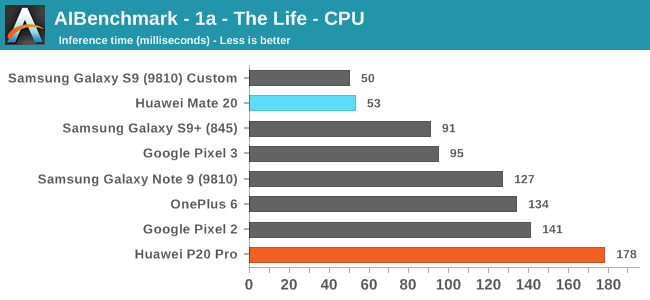
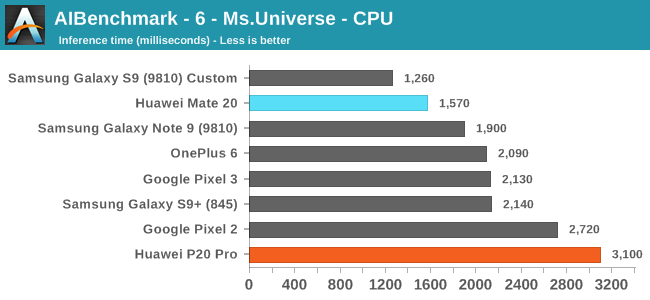
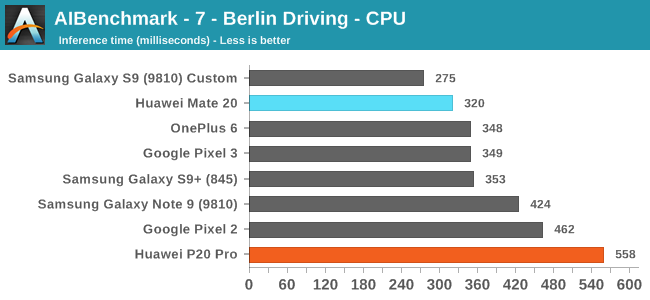
The first three CPU tests rely on models which have functions that are not yet supported by the NNAPI. Here what matters for the performance is just the CPU performance as well as the performance response time. The latter I mention, because the workload is transactional in its nature and we are just testing a single image inference. This means that mechanisms such as DVFS and scheduler responsiveness can have a huge impact on the results. This is best demonstrated by the fact that my custom kernel of the Exynos 9810 in the Galaxy S9 performs significantly better than the stock kernel of the same chip of the Note9 in the same above results.
Still, comparing the Huawei P20 Pro (most up to date software stack with Kirin 970) to the new Mate 20, we see some really impressive results of the latter. This both showcases the performance of the A76 cores, as well as possibly improvements in HiSilicon’s DVFS/scheduler.
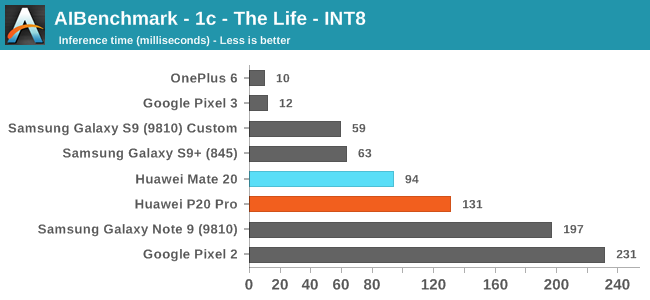
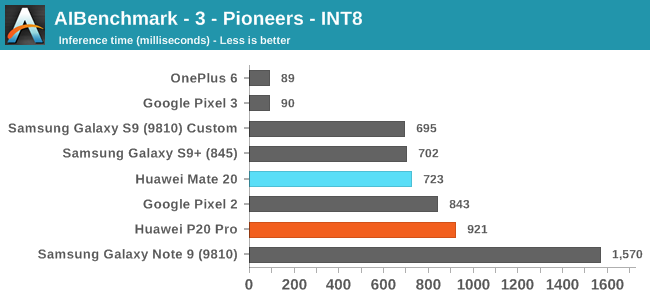
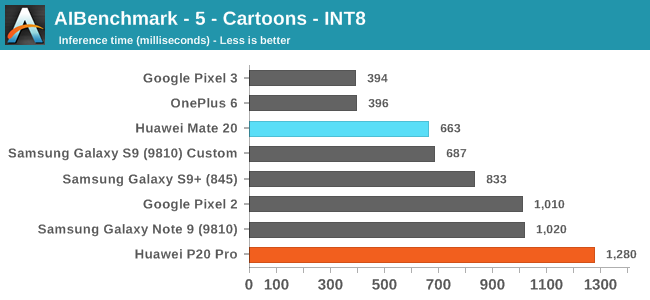
Moving onto the next set of tests, these are based on 8-bit integer quantized NN models. Unfortunately for the Huawei phones, HiSilicons NNAPI drivers still doesn’t seem to expose acceleration to the hardware. Andrey had shared with me that in communications with Huawei, is that they plan to rectify this in a future version of the driver.
Effectively, these tests also don’t use the NPU on the Kirins, and it’s again a showcase of the CPU performance.
On the Qualcomm devices, we see the OnePlus 6 and Pixel 3 far ahead in performance, even compared to the same chipset Galaxy S9+. The reason for this is that both of these phones are running a new updated NNAPI driver from Qualcomm which came along with the Android 9/P BSP update. Here acceleration if facilitated through the HVX DSPs.
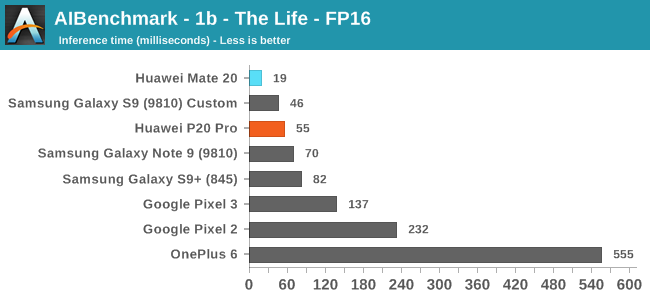
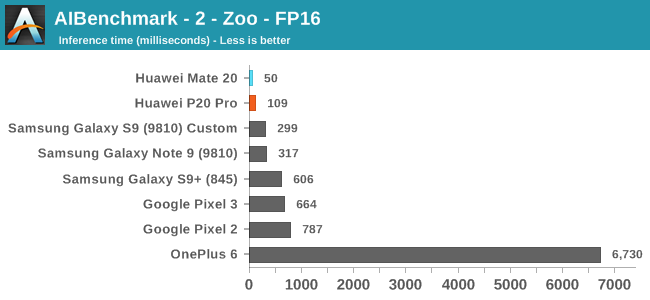
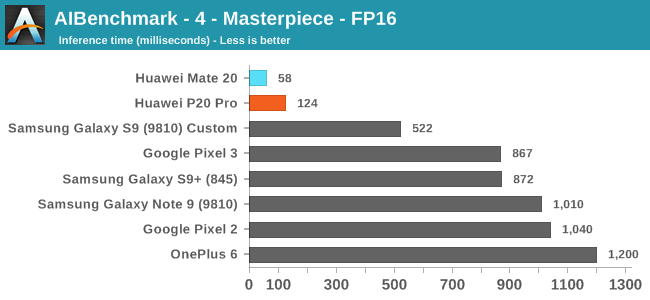
Moving on to the FP16 tests, here we finally see the Huawei devices make use of the NPU, and post some leading scores both on the old and new generation SoCs. Here the Kirin 980’s >2x NPU improvement finally materialises, with the Mate 20 showcasing a big lead.
I’m not sure if the other devices are running the workloads on the CPU or on the GPU, and the OnePlus 6 seems to suffer from some very odd regression in its NNAPI drivers that makes it perform an order of magnitude worse than other platforms.
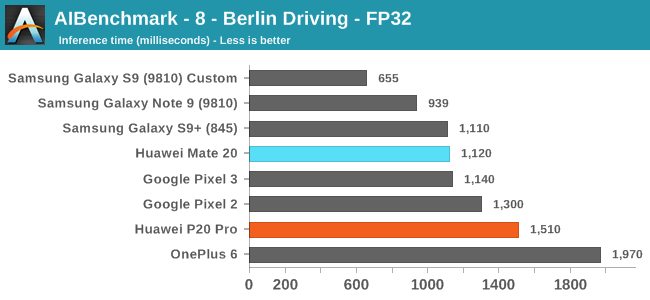
Finally on the last FP32 model test, most phones should be running the workload on the CPU again. There’s a more limited improvement on the part of the Mate 20.
Overall, AI-Benchmark was at least able to validate some of Huawei’s NPU performance claims, even though that the real conclusion we should be drawing from these results is that most devices with NNAPI drivers are currently just inherently immature and still very limited in their functionality, which sadly enough again is a sad contrast compared where Apple’s CoreML ecosystem is at today.
I refer back to my conclusion from early in the year regarding the Kirin 970: I still don’t see the NPU as something that obviously beneficial to users, simply because we just don’t have the software applications available to make use of the hardware. I’m not sure to what extent Huawei uses the NPU for camera processing, but other than such first-party use-cases, NPUs currently still seems something mostly inconsequential to device experience
System Performance
Given that we’ve seen excellent raw CPU performance of the Kirin 980, we should also largely see this translated over to actual system performance. System performance is what we call the performance of more realistic every-day workloads, which are most of the time mainly transactional in their nature, in contrast to the more continuous long SPEC tests of the previous pages.
The Mate 20’s come with Android 9/P out of the box, and in terms of mechanisms that promise to improve system performance, Huawei/HiSilicon employ a custom scheduler for the Kirin 980 that is able to properly deal with the three efficiency CPU groups (Perf & efficiency A76’s, and A55s).
Huawei has been locking down things quite tightly over the past year, so I wasn’t able to extract that much information out of the kernel. What I did find out is that it looks like they’re using a scheduler that is based on Google’s ACK (Android Common Kernel) and builds custom modifications on top of that. Among the key features that look to be enabled in the kernel is WALT – which I think if I’m not mistaken would make this the first non-Qualcomm SoC which sports the more responsive load tracking mechanism out of the box.
It’s to be noted that after our recent article addressing less than honest benchmarking behaviour, that Huawei has changed the behaviour of its battery power modes. The new “Performance mode” in the battery settings is off by default, which I found quite a bit odd as a default setting. To be able to get the full performance of the SoC blocks, this setting should be turned on, and we’ll note that all our testing was with the performance mode enabled, something which Huawei also recommended us to do.
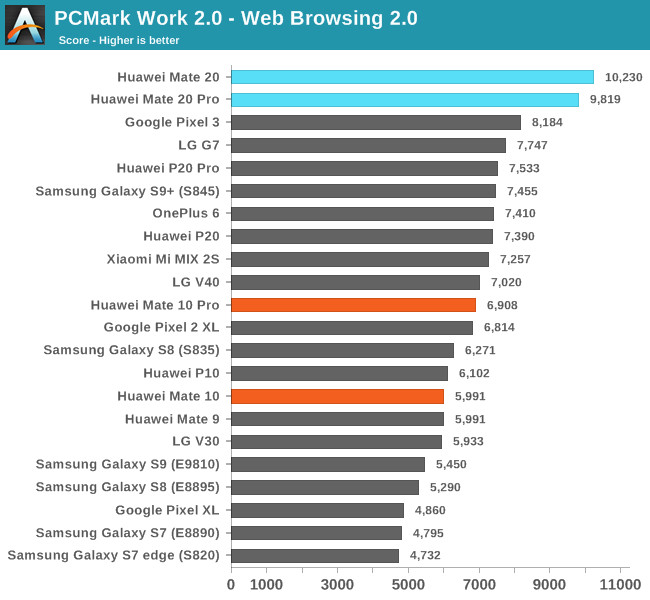
Starting off with the PCMark Web Browsing 2.0 test, we see the Mate 20’s take a considerable lead among all Android devices. Here it is evidently clear that this is a considerable generational leap in performance, and more so compared to the previous generation Kirin 970 devices.
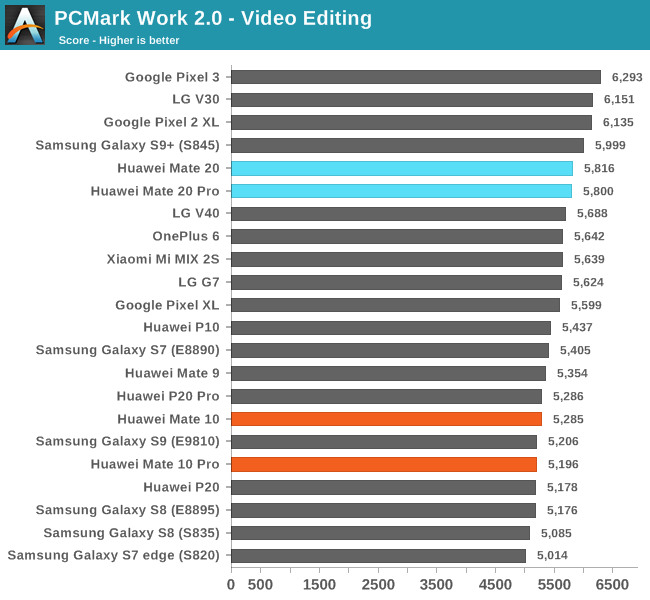
The video editing test again has become somewhat non-representative of performance as most flagship devices hover within the same score range without much difference between each other. I’m still now sure why some devices score ever so slightly higher or lower, but the absolute differences are quite minor..
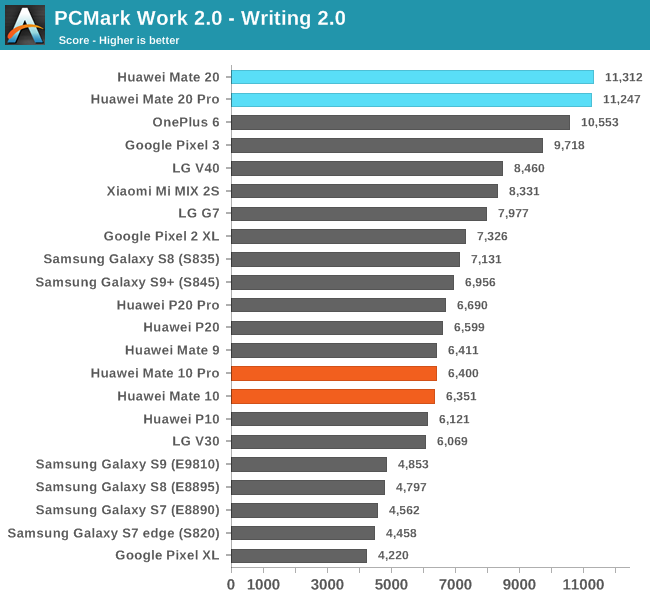
The PCMark Writing test is among one of the most representative ones in terms of putting a number on overall device snappiness and speed. Here the Mate 20’s again take the lead, however the delta to the second best devices here isn’t quite as big as in the web browsing test. The OnePlus 6 and Pixel 3 both seem to have an advantage over other devices due to the fact that they’re running Android 9/P along with an up-to-date Qualcomm scheduler.
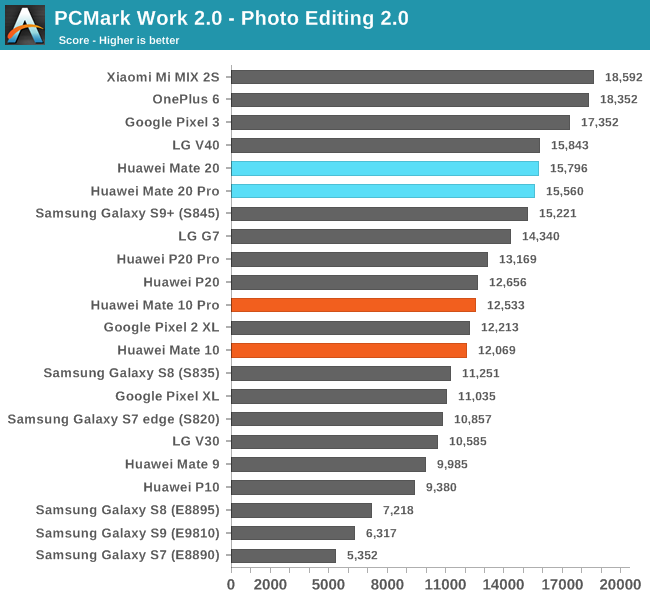
The photo editing test consists of small workload bursts – applying photo filters via RenderScript APIs. Here both performance and again performance responsiveness are key. The Mate 20’s again do very well, however they don’t quite match the performance of some of the best Snapdragon 845 devices, featuring the more up to date Qualcomm schedulers.
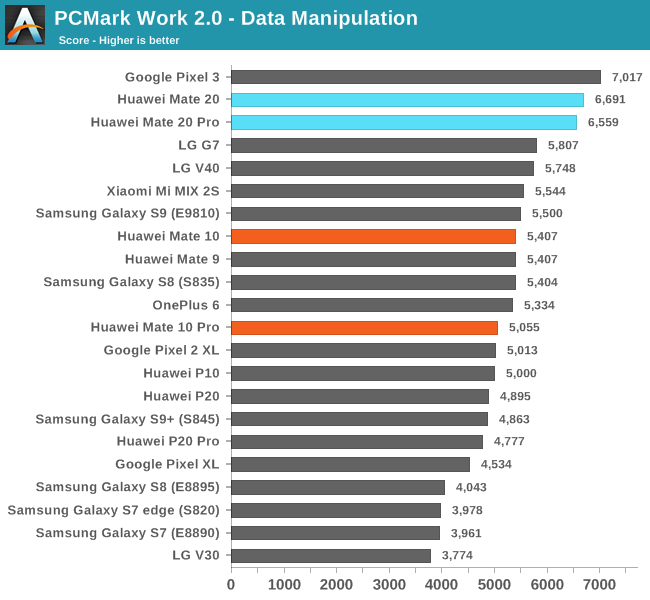
The Data Manipulation test is heavily influenced by single-threaded performance. Here although they don’t seem to quite match the Pixel 3 in this particular test, the Mate 20’s are still ahead of most other Android phones.
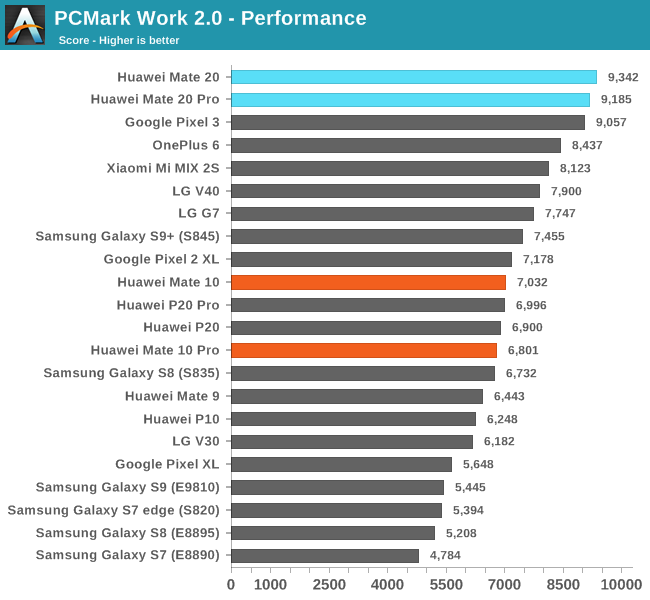
In the overall PCMark performance test, the Mate 20’s just land ahead of the Pixel 3 and OnePlus 6.
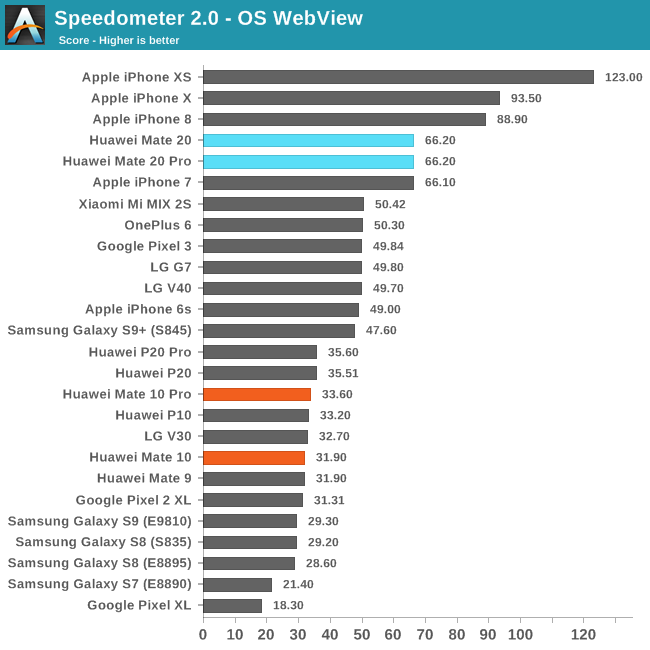
In the WebView tests where we first use Speedometer, a JS framework test, we see the Mate 20’s again take a good leap ahead of the second-best Android platforms based on the Snapdragon 845. Against the previous generation Kirin 970 phones, Huawei was again essentially able to double the performance. It’s still not enough to catch up to Apple, but at least we’re on par with the A10, a result that was also largely represented by the SPEC2006 results.
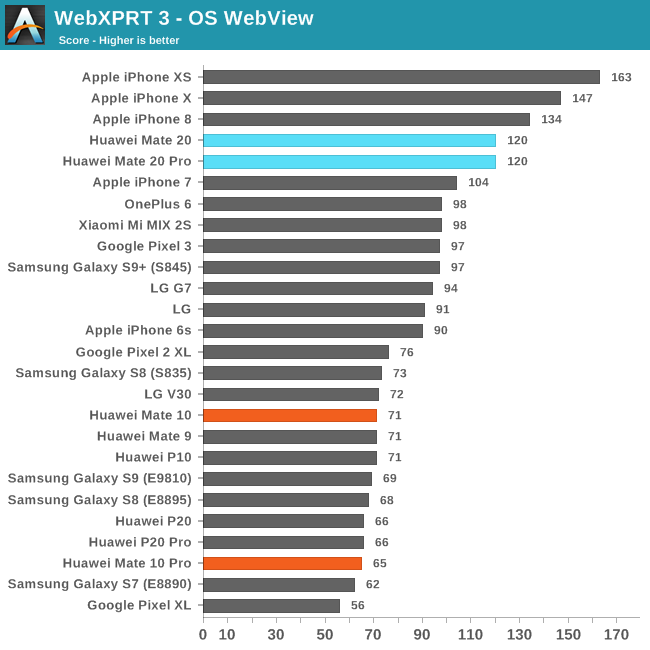
WebXPRT is a tad less microarchitecturally demanding than Speedometer, and here performance largely seems to scale with simple overall raw CPU execution power. Again we see a similar positioning as in Speedometer, with the Mate 20’s taking the lead among Android devices.
My experience with the devices pretty much matches the system benchmarks – the Mate 20’s are among the fastest devices on the market. Where the Kirin 980’s performance shines is in more complex and heavier workloads, such as loading a webpage or opening content of more heavy apps.
In terms of overall feel and responsiveness, I do feel that the Mate 20’s maybe weren’t quite as fast as the Pixel 3 or OnePlus 6. Here these phones do feel a bit quicker in opening some applications or new activities. It’s possible that Huawei maybe is lacking some OS framework related boosters that these phones might be using. I do plan to try to reintroduce empirical and controlled app loading time testing in the future, so this might be a topic we’ll revisit soon enough.
GPU Performance & Power
The Kirin 980 is the first SoC to sport Arm’s newest generation Mali G76 GPU. The new IP differs significantly to previous generations, in more or less simplified terms, in that the GPU cores are essentially twice as big and capable as the previous generation Mali G72 cores. So while the G76MP10 configuration of the Kirin 980 might sound small, it’s not small at all in terms of theoretical performance.
GPU performance and efficiency has been a big thorn in the side of both the Kirin 960 and 970, as both SoCs showcased less than stellar power figures, which in turn also resulted in forced limited clocks and performance of the GPUs. It’s here that Huawei made the biggest promises in terms of improvements: a claimed 46% increase in performance while showcasing a staggering 178% increase in power efficiency. The latter figure especially caught some attention, as you just don’t see such increases in the industry.
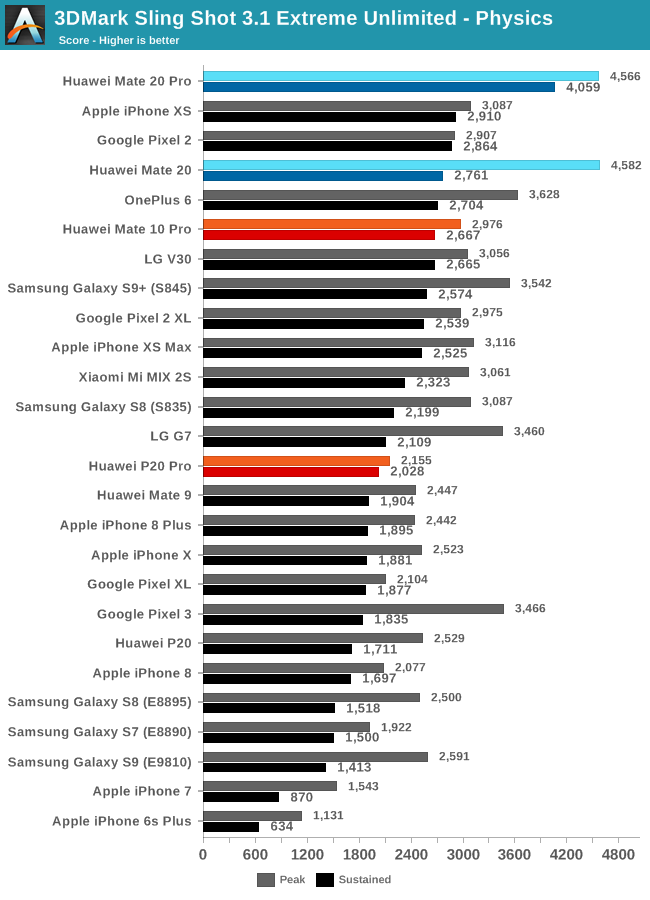
Starting off with 3DMark Sling Shot Extreme Unlimited and the Physics sub-test, we see the Mate 20’s showcase some leading peak performance figures. This test is mainly a CPU test with just some more minor GPU load. The performance jump here undoubtedly comes from the new Cortex A76 microarchitecture.
In terms of sustained performance, we see some diverging figures between the Mate 20 and Mate 20 Pro, as the Pro is able to reach much higher sustained scores. Before getting into any conclusions, it’s worth to also look at the GPU results.
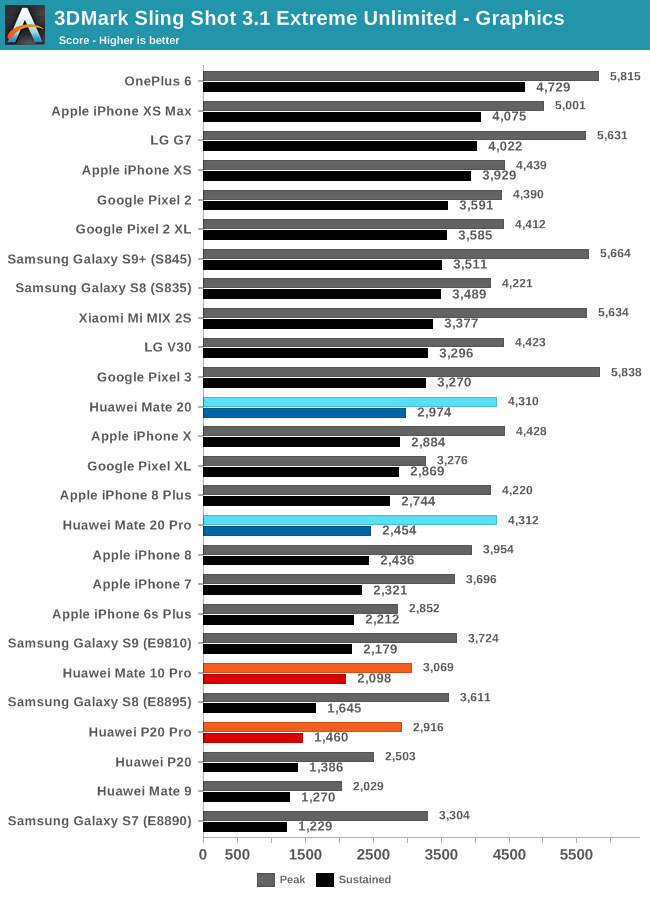
On the Graphics sub-test, we see both new Mate 20’s reach respectable peak performance figures, however they are both still throttling quite a lot until they reach thermal equilibrium. Comparing the results to the stock firmware Kirin 970’s, such as the P20 Pro, the performance increase is nevertheless quite significant.
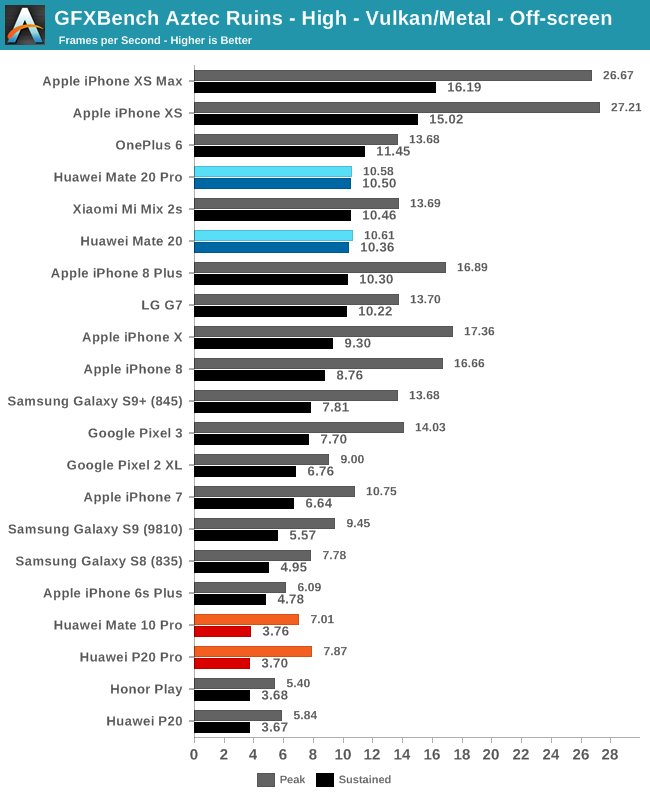
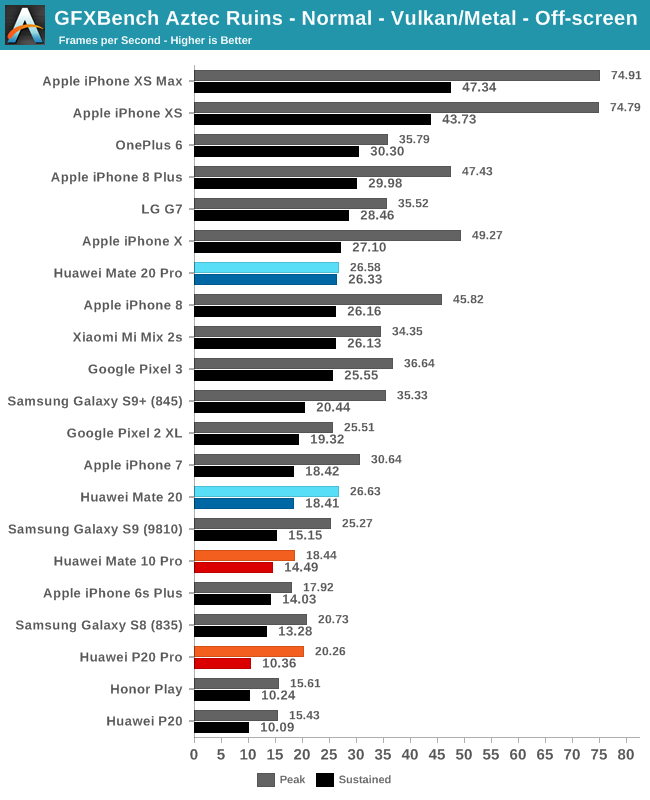
In the new Aztec Ruins Vulkan benchmarks, both in High and Normal quality modes, we see some really odd performance behaviour. While the peak performance isn’t all that great, the sustained performance is pretty much almost identical. On the Normal run the Mate 20 Pro actually was able to maintain a higher performance than the Mate 20, something that we also saw on the 3DMark Physics run. It would be definitely interesting if the benchmark is in some way CPU bound, or if the devices have different thermal limits between Vulkan and OpenGLES workloads.
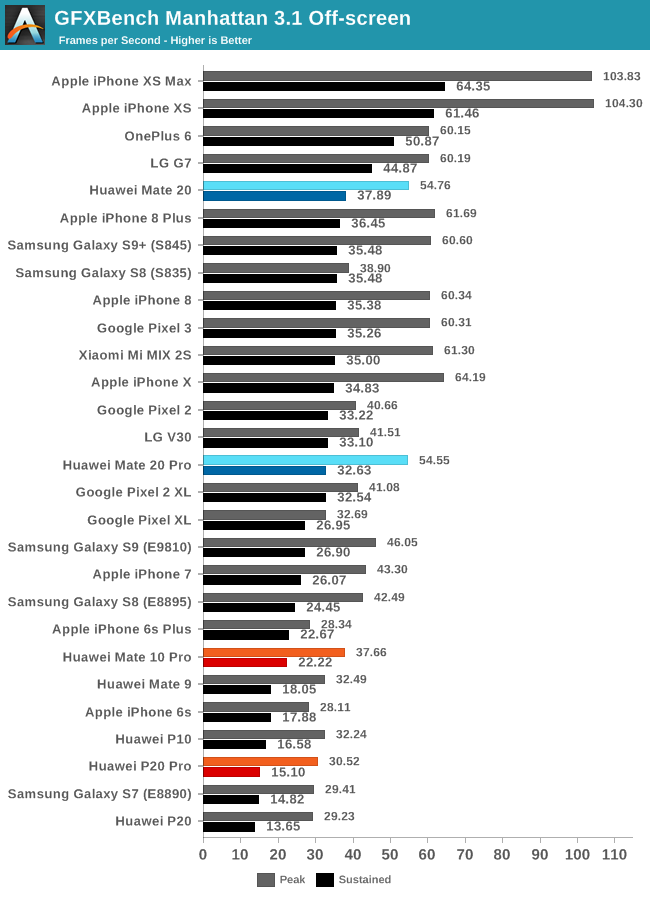
In Manhattan 3.1, we see again respectable performance gains both in peak and sustained figures. Compared to the Vulkan runs, these scores showcase a more expected delta between peak and sustained. The Kirin 980 here generally matches most Snapdragon 845 devices – short of the OnePlus 6 and G7 which seem to allow much higher sustained power limits.
| GFXBench Manhattan 3.1 Offscreen Power Efficiency (System Active Power) |
||||
| Mfc. Process | FPS | Avg. Power (W) |
Perf/W Efficiency |
|
| iPhone XS (A12) Warm | 7FF | 76.51 | 3.79 | 20.18 fps/W |
| iPhone XS (A12) Cold / Peak | 7FF | 103.83 | 5.98 | 17.36 fps/W |
| Galaxy S9+ (Snapdragon 845) | 10LPP | 61.16 | 5.01 | 11.99 fps/W |
| Huawei Mate 20 Pro (Kirin 980) | 7FF | 54.54 | 4.57 | 11.93 fps/W |
| Galaxy S9 (Exynos 9810) | 10LPP | 46.04 | 4.08 | 11.28 fps/W |
| Galaxy S8 (Snapdragon 835) | 10LPE | 38.90 | 3.79 | 10.26 fps/W |
| LeEco Le Pro3 (Snapdragon 821) | 14LPP | 33.04 | 4.18 | 7.90 fps/W |
| Galaxy S7 (Snapdragon 820) | 14LPP | 30.98 | 3.98 | 7.78 fps/W |
| Huawei Mate 10 (Kirin 970) | 10FF | 37.66 | 6.33 | 5.94 fps/W |
| Galaxy S8 (Exynos 8895) | 10LPE | 42.49 | 7.35 | 5.78 fps/W |
| Galaxy S7 (Exynos 8890) | 14LPP | 29.41 | 5.95 | 4.94 fps/W |
| Meizu PRO 5 (Exynos 7420) | 14LPE | 14.45 | 3.47 | 4.16 fps/W |
| Nexus 6P (Snapdragon 810 v2.1) | 20Soc | 21.94 | 5.44 | 4.03 fps/W |
| Huawei Mate 8 (Kirin 950) | 16FF+ | 10.37 | 2.75 | 3.77 fps/W |
| Huawei Mate 9 (Kirin 960) | 16FFC | 32.49 | 8.63 | 3.77 fps/W |
| Huawei P9 (Kirin 955) | 16FF+ | 10.59 | 2.98 | 3.55 fps/W |
Looking at the power efficiency during Manhattan 3.1, we unfortunately see that the phone and chipset didn’t quite meet my projections in efficiency. Performance is exactly where it should be, however the power is off by about 1W as I had hoped to see about 3.5W peak power. At peak performance of both chipsets, the Kirin 980 showcases a 100% efficiency gain over the Kirin 970, which is still a pretty massive generational improvement, even if the previous generation didn’t exactly set the bar all that high.
In regards to Huawei’s 178% power efficiency claim during the chipset’s announcement: I still think this number is correct, however evidently this was a traditional case of somewhat misleading presentation or a mixup between “or” and “and” in the relationship between the performance and power efficiency improvements. Now in hindsight, the 178% efficiency figure likely refers to the efficiency advantage of the Kirin 980 at the same performance of the Kirin 970, which given the measured power figures here, is something that’s definitely plausible.
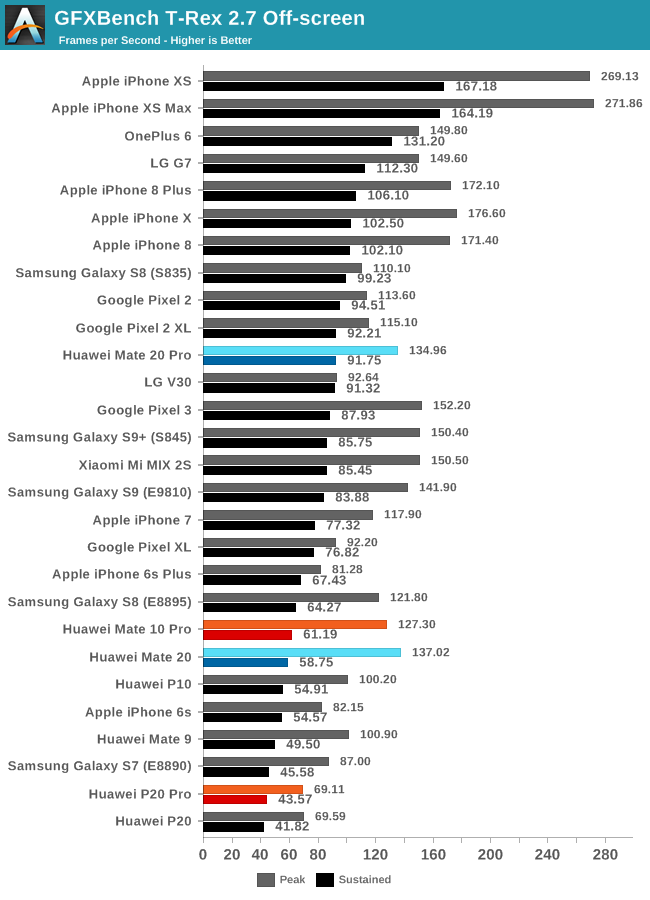
In T-Rex, the peak performance improvements over the Kirin 970 are far less, and I do wonder exactly what the bottleneck here is. Nevertheless, the sustained performance jumps 50%, but yet again this is just for the Mate 20 Pro as the regular Mate 20 sees far more severe throttling. T-Rex would be in many ways CPU bound as it’s hitting very high frame-rates on modern SoCs.
| GFXBench T-Rex Offscreen Power Efficiency (System Active Power) |
||||
| Mfc. Process | FPS | Avg. Power (W) |
Perf/W Efficiency |
|
| iPhone XS (A12) Warm | 7FF | 197.80 | 3.95 | 50.07 fps/W |
| iPhone XS (A12) Cold / Peak | 7FF | 271.86 | 6.10 | 44.56 fps/W |
| Galaxy S9+ (Snapdragon 845) | 10LPP | 150.40 | 4.42 | 34.00 fps/W |
| Galaxy S9 (Exynos 9810) | 10LPP | 141.91 | 4.34 | 32.67 fps/W |
| Galaxy S8 (Snapdragon 835) | 10LPE | 108.20 | 3.45 | 31.31 fps/W |
| Huawei Mate 20 Pro (Kirin 980) | 7FF | 135.75 | 4.64 | 29.25 fps/W |
| LeEco Le Pro3 (Snapdragon 821) | 14LPP | 94.97 | 3.91 | 24.26 fps/W |
| Galaxy S7 (Snapdragon 820) | 14LPP | 90.59 | 4.18 | 21.67 fps/W |
| Galaxy S8 (Exynos 8895) | 10LPE | 121.00 | 5.86 | 20.65 fps/W |
| Galaxy S7 (Exynos 8890) | 14LPP | 87.00 | 4.70 | 18.51 fps/W |
| Huawei Mate 10 (Kirin 970) | 10FF | 127.25 | 7.93 | 16.04 fps/W |
| Meizu PRO 5 (Exynos 7420) | 14LPE | 55.67 | 3.83 | 14.54 fps/W |
| Nexus 6P (Snapdragon 810 v2.1) | 20Soc | 58.97 | 4.70 | 12.54 fps/W |
| Huawei Mate 8 (Kirin 950) | 16FF+ | 41.69 | 3.58 | 11.64 fps/W |
| Huawei P9 (Kirin 955) | 16FF+ | 40.42 | 3.68 | 10.98 fps/W |
| Huawei Mate 9 (Kirin 960) | 16FFC | 99.16 | 9.51 | 10.42 fps/W |
Again, the power efficiency as measured on T-Rex sees a significant jump over the Kirin 970, however most of this improvement is simply going towards reducing the actual power usage from the ridiculously high values of its predecessor, with only a little gained peak performance.
I wouldn’t take this as a definitive verdict on the Mali G76 as of yet, as over the last 3 generations Samsung has been able to extract much better results out of their GPU implementations inside the Exynos SoCs than what HiSilicon was able to achieve in the Kirins. The next generation Exynos 9820 should be able to do better than this, so maybe that’s where the Mali G76 will hit its projected targets.
Overall, the Kirin 980 definitely is posting substantial improvements over its predecessor, however Arm’s Mali GPU still seems to lag a tad behind the higher end competition from Apple and Qualcomm. What is definitely positive for Huawei is that the new SoC finally is able to shed off the atrocious performance showcased in the previous generation chipsets, and is now actually competitive with most recent devices.
Display Measurement & Power
The Mate 20 and Mate 20 Pro come with very different screen technologies: the Mate 20 uses an RGBW LCD screen, while the Mate 20 Pro uses an OLED display.
For the Mate 20, the panel is dual-sourced from Sharp and JDI, with the DDIC model "TD4336". The resolution here is 2244 x 1080, which is quite a bit stretched out for a screen of this size, especially because of the non-RGB subpixel layout. However for most people and normal viewing distances, this is not an issue, and only really arises when you hold the device closer to you. Viewing angles are excellent for an LCD, and I haven’t really observed any other immediately obvious drawbacks for this model.
The Mate 20 Pro uses an OLED display, and this is the first time that Huawei has shipped a 1440p phone. The device’s screen comes in at a resolution of 3120 x 1440. Panel-wise, Huawei is dual-sourcing from both LG Display as well as BOE. The DDIC for the LG model is marked "EA9151" whose manufacturer I haven't yet figured out, but strongly leaning on this being LG silicon, while the BOE model is sporting a new generation Synaptics R66451 which we've covered at CES earlier this year.
The review model I received is sporting an LG panel.
Now I have to admit that I never much understood people who were put off by hue shift of some OLED screen when viewed by off-axis angles, that is until I actually unboxed the Mate 20 Pro for the first time. Unfortunately either Huawei or the panel manufacturer are using some sort of unusual type of polarization layer above the OLED panel, which causes this effect to be a lot more pronounced than any other OLED device I’ve come across.
The polarization layer is a little talked about topic and I’ve never really see any teardown really address this, so here’s an older Tweet of mine showcasing the layer of a broken down S7+ display.
Subpixel layout has nothing to do with colour shift. It's the polarisation layer which causes it. pic.twitter.com/XZDK4C1f0G
— Andrei F. (@andreif7) February 22, 2017
The polarization layer is what makes displays able to actually appear as black/dark, as the OLED panel itself to the naked eye just appears as a sheet of bright copper. The iridescence of this polarization layer is also what actually causes hue shifts in OLED displays.
Now I wouldn’t say this is an absolute deal breaker for the Mate 20 Pro, and it is something you can get used to, but the fact that I immediately noticed this even though I’ve been using OLED phones as daily drivers for the past 7 years should be something that users need to keep in mind.
As always, we thank X-Rite and SpecraCal, as measurements are performed with an X-Rite i1Pro 2 spectrophotometer, with the exception of black levels which are measured with an i1Display Pro colorimeter. Data is collected and examined using SpectraCal's CalMAN software.
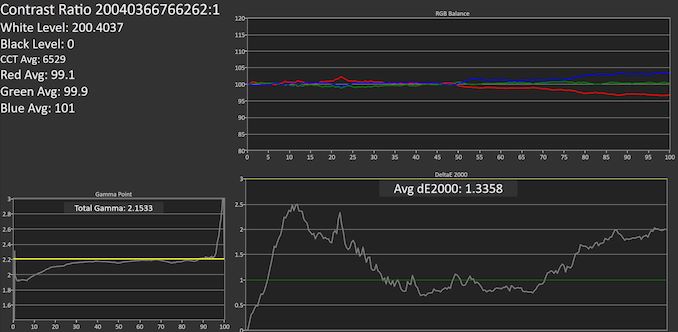 SpectraCal CalMAN
SpectraCal CalMAN
Mate 20 Pro / sRGB (Natural default):
Mate 20 Pro / Display P3 D65 (Vivid warm):
Mate 20 / sRGB (Natural default):
Mate 20 / DIsplay P3 D65 (Vivid default):
 SpectraCal CalMAN
SpectraCal CalMAN
Mate 20 "Natural" Default Mode
 SpectraCal CalMAN
SpectraCal CalMAN
Mate 20 Pro "Natural" Default Mode
Huawei allows users to choose between two screen colour modes “Natural”, which targets the sRGB colourspace, and “Vivid” which targets Display P3. Alongside these saturation choices, Huawei also presents three pre-defined colour temperature settings “Default”, “Warm”, and “Cold”, beyond these there’s also infinitely adjustable colour wheel for finer adjustments. For the measurements, I’ve chosen the most accurate presets as provided by Huawei, which is usually just the default colour temperature in either colourspace mode, with the exception of the “Vivid” mode on the Mate 20 Pro where I had to choose the “Warm” preset because the default was far too cold and blue in terms of whites. The same actually applies to the Mate 20’s Vivid mode, however this wasn’t easily fixable.
On the Mate 20 Pro, at 200 nits we see some really good greyscale accuracy in the Natural/sRGB default mode with overall accurate colour temperatures across most levels. At the lower levels the gamma is a bit lower, making darker colours appear brighter than they should be. Switching over to the Display P3 “Vivid” mode this behaviour in the gamma curve disappears, although the colour temperature here is just slightly warmer than the D65 target. Here there’s some need for fine-tuning with the colour wheel to be able to hit better results.
Switching over to the Mate 20, we see some less-than-impressive results. Here the phone by default comes with a terribly reddish screen, and this is showcased by the very low 5900K colour temperature. In the sRGB / Natural mode this is not fixable even when selecting the “Cold” mode, and this actually introduces more error in the greens. The best result is again manually adjusting it with the colour wheel, but even at the most extreme setting it’s still not able to correct the vast red overshoot of this calibration. What is also very peculiar here is the gamma curve of the calibration, it’s only nearing the target 2.2 towards the middle levels, while being far too low both in darker and lighter levels.
Switching to the “Vivid” mode on the Mate 20, which is the default that that phones come in, the peculiar gamma behaviour is gone, albeit while flat now, it’s slightly higher than the 2.2 target, making things appear more dark and contrasted. While the “Natural” mode suffered too much of a red shift, this mode veers off into much too blue. Again this calibration here isn’t easily fixable and one has to play with the colour wheel to get some reasonable results.
In terms of brightness, the Mate 20 Pro reaches 417 or 441 nits depending on mode while on maximum manual brightness. The Mate 20 goes up to 460 / 492 nits. Both phones have brightness boost modes while in auto-brightness mode and also while in very lit environments, here the Mate 20 Pro goes up to 562 / 586 nits, and the Mate 20 goes up to 723 / 702 nits. In this mode they also apply an artificial lower gamma curve for better sunlight legibility, but for some reason this doesn’t happen on the Mate 20’s “Vivid” mode.
Mate 20 Pro - LG "quality"...
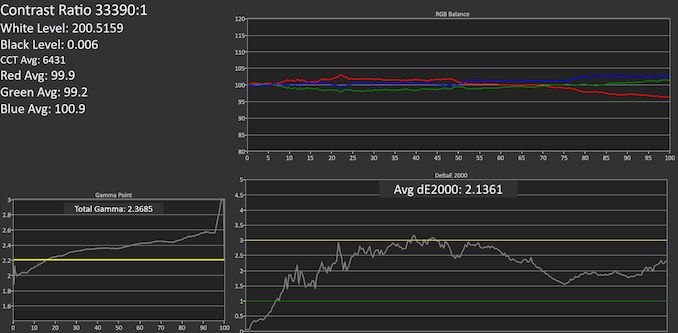 SpectraCal CalMAN
SpectraCal CalMAN
Mate 20 Pro / sRGB (Natural default):
Something that was immensely annoying on the Mate 20 Pro – and also a bane in terms of calibrating the display for 200 nits for the battery tests – was that it uses a quite aggressive CABC (content adaptive brightness control) mechanism. Here the screen’s brightness will vary depending not only through the APL (average picture level), but also on percentages window sizes. Where this was most visible is the resulting gamma.
The above measurements were done with at 25% central measurement area, with the outside area adjusting to try to target the given APL level. First of all the central area’s and APL always influences brightness, so I always recalibrate the centre’s brightness back to 200 nits. The resulting gamma curve while in this mode is definitely wonky, but again this isn’t because the gamma curve is wrong, but because the screen continuously readjusts its brightness. We’ve had LG phones in the past showcase the same behaviour, and unfortunately there’s just no way of turning this off.
Another absolutely astonishing behaviour that I encountered while doing the auto-brightness greyscale measurements on the Mate 20 Pro is the fact that the display showcases large brightness artifacts in this mode. The above video showcases a 3.9% grey (#0A0A0A) and I’m triggering the boost mode with an LED flash. What looks to be happening is that whole areas of the screen just aren’t boosting to their target brightness. The resulting pattern is also not constant and will vary with each switch, but is always located on the sides of the panel. This apparent non-uniformity visibly goes away at higher levels, but what was enlightening about this is that the pattern is never really gone, it just becomes unperceivable to the eye. Measuring it always reveals a slight deviation in brightness of a few nits in the general form of this pattern. While this was an edge-case issue for the Mate 20 Pro, it’s just massively disappointing for the LG panel and the fact that it went past QA.
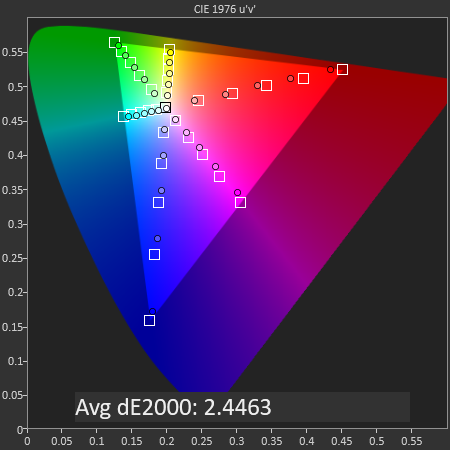
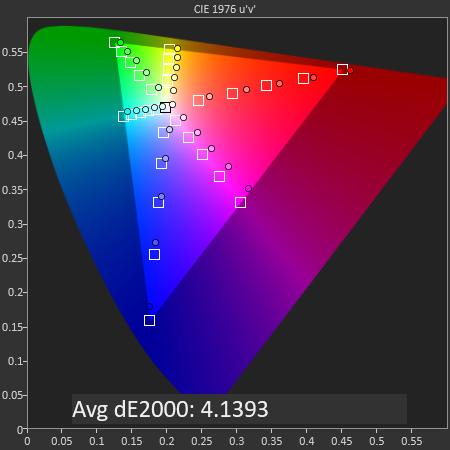 SpectraCal CalMAN
SpectraCal CalMAN
sRGB saturations: Mate 20 Pro (Natural default) & Mate 20 (Natural default)
Moving on to the actual colourspace calibration measurements, we see the Mate 20 Pro doing an “ok” result with a deltaE200 of 2.4. The actual issue here is oddly enough that the screen is under-saturated in all primary colours, undershooting the sRGB target.
The Mate 20’s issue isn’t per se that is under-saturates, it’s just that the whole calibration is shifted too much towards the red spectrum, something I’ve addressed in the greyscale results. This can be mostly remediated by using a custom colour temperature target to the very edge of the colour adjustment wheel between blue and green, with a bias more towards blue. Still, it’s not enough to fix the large calibration issues.
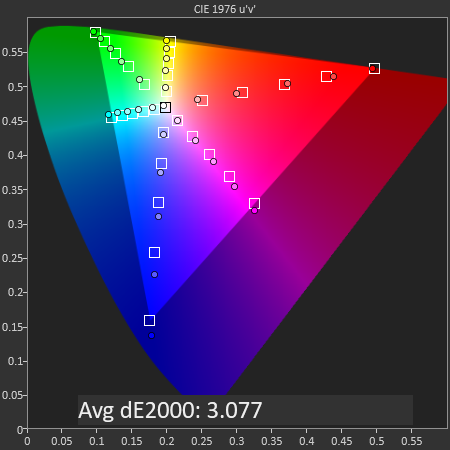
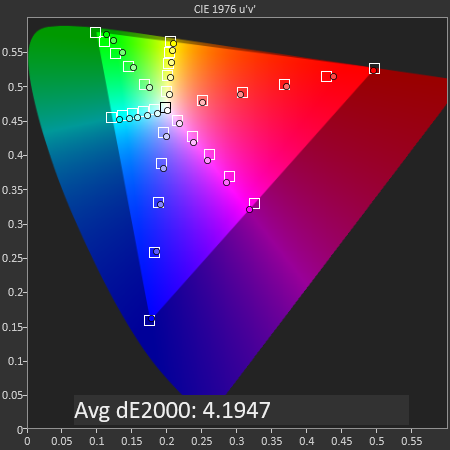 SpectraCal CalMAN
SpectraCal CalMAN
Display P3 D65 saturations: Mate 20 Pro (Vivid warm) & Mate 20 (Vivid default)
Switching over to the “Vivid” Display P3 screen mode, the issue with the Mate 20 Pro is that the blue spectrum is overshooting its targets. Intermediate levels in green are oversaturated as well, while the reds present a non-linear behaviour, undersaturating the lower levels while oversaturating the higher levels.
The Mate 20’s calibration in the “Vivid” mode is better than the Natural mode, however there’s still issues with shifts. The red and blue channels are accurate in their hue, but green is too off, which means this can’t be corrected by the colour wheel, as this affects all colours of the colour space.
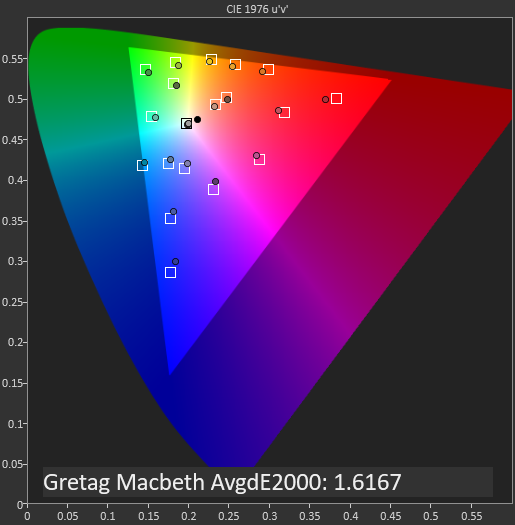
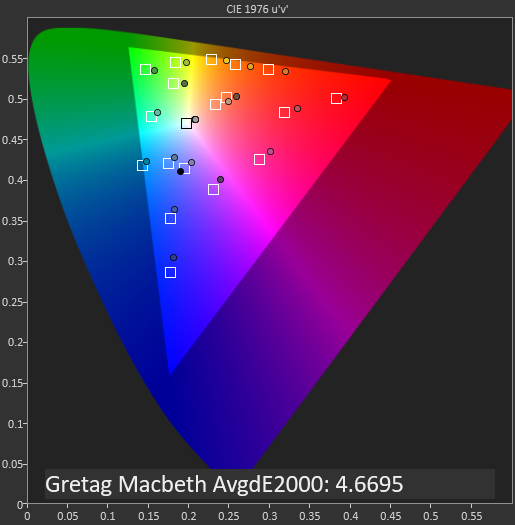 SpectraCal CalMAN
SpectraCal CalMAN
GMB : Mate 20 Pro (Natural default) & Mate 20 (Natural default)
 SpectraCal CalMAN
SpectraCal CalMAN
Mate 20 "Natural" Default Mode
 SpectraCal CalMAN
SpectraCal CalMAN
Mate 20 Pro "Natural" Default Mode
In the GretagMacBeth test of commonly found tones and skin colours, the Mate 20 Pro fares very well in its Natural default mode, however the Mate 20 is just wildly off with the colours, beyond the threshold of what is perceivable with the naked eye.
Display Power
I’m actually writing this part after having tested the battery results of the two Mate 20’s – with a bit on hindsight on my part, the topic of screen power efficiency is quite important, especially since the Mate 20 and Mate 20 Pro have two very fundamentally different screen technologies.
Here I’m showcasing the total device power in idle conditions (airplane mode) at varying display brightness levels. This not only show the luminance efficiency of the panels (the delta between 0 and a certain brightness point), but also the absolute minimum idle power of a phone. I’ve also thrown in a few other relevant phones into the graph so facilitate the following analysis and discussion.
Off the bat, the Mate 20 and Mate 20 Pro showcase very different resulting power curves. There’s two things to consider here: the luminance efficiency, which is represented by the slope of the curves, as well as the base power consumption. As I had already noted in our review of the LG G7, the luminance efficiency of RGBW panels can be quite excellent and easily surpasses that of OLED phones while displaying fullscreen white. It’s this exact behaviour that we see here between the Mate 20, and most other OLED phones. To keep things in mind, we have to remember that in everyday use-cases with common media, the actual APL will vary a lot, and this advantage of OLED phones isn’t nearly as great.
The more concerning aspect is the base power consumption. The Mate 20 Pro showcases a very stark difference to the Mate 20. At 0 nits, meaning when the displays are showing a black image, the Mate 20 Pro consumes 519mW versus the Mate 20’s 348mW. When switching over to a full white image at minimum brightness of ~1.5nits, the Mate 20 Pro jumps almost 84mW, a delta that is uncharacteristically higher than any other OLED phone. Here the Mate 20 Pro comes in at 603mW versus the Mate 20’s 393mW.
This 210mW difference is quite alarming, as it is part of the phone’s base power consumption that is essentially ever present no matter what you do while the screen is on. This is also one of the core issues that hampered the LG G7 from achieving better battery life results, even though its luminance efficiency was excellent.
I haven’t reviewed the LG V40 as of yet as I’ve only received a unit, but I wanted to get its results into this graph to see if we can see any correlation between the LG screens. In terms of luminance efficiency, the Mate 20 Pro’s screen is slightly worse than the V40’s. Where the V40 absolutely blows it, is in the base power consumption with a staggering 786mW while displaying black. I haven’t run the battery tests on the V40 as of yet but I can already tell it’ll end up with disastrous results, something that seems to match the experience of other reviews.
What is alarming for the Mate 20 Pro is that this is quite a regression over the P20 Pro, as well as the Mate 10 Pro (not graphed). These previous generations were using Samsung supplied panels, with a lower resolution of 1080p. Again I included the Galaxy S9+ in the results as well to demonstrate that 1440p isn’t the inherent issue here, as this unit also fares quite better than the Mate 20 Pro.
In the last hours of this review, HiSilicon was able to get back to me and confirm that the Mate 20 Pro uses dual MIPI lanes in order to achieve the bandwidth for 1440p - something which is quite unfortunate. Samsung achieves 1440p on its phones by using a single MIPI lane with compression (either DSC or a proprietary format with Exynos), which is a much more efficient way to drive the DDIC.
Moving on to the battery life results, it should be interesting to see the effect these display power discoveries.
Battery Life - Contrasting Two Models
The Mate 20 comes with an LCD screen and a 4000mAh battery. The screen is slightly larger in area than that of the Mate 20 Pro, who in turn uses an OLED screen, but also features a slightly larger 4200mAh battery.
The Kirin 980 of both phones should provide great efficiency, although I have to note that my units of the Mate 20 Pro seemed to have a worse binned SoC, as active system power consumption (normalised for screen and idle) in SPEC was about 8-9% higher than on the Mate 20.
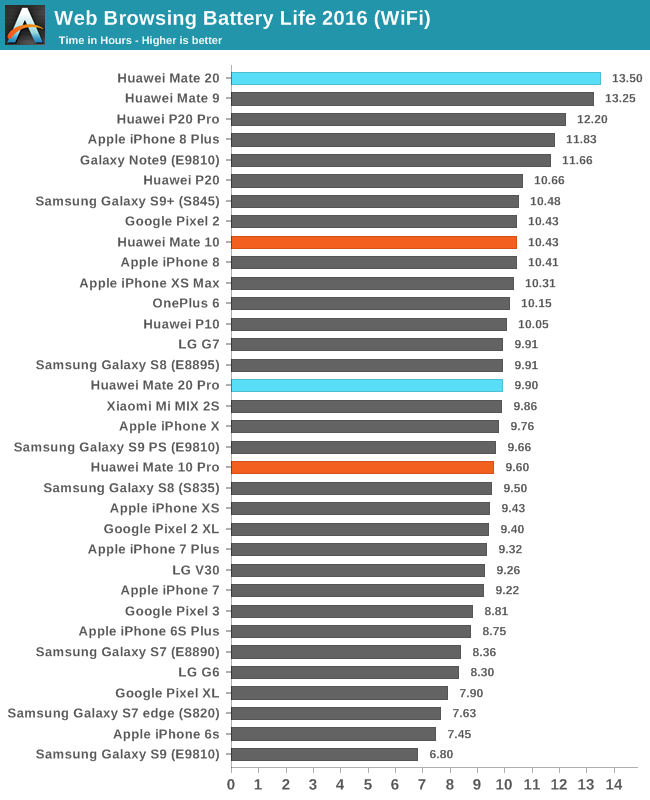
In the web browsing test, we see the regular Mate 20 post some new record battery life results, with a staggering runtime of 13.5h. Here we finally see Huawei replicate the results of the Mate 9, which similarly had a very efficient screen. The efficiency of the SoC also augments the phone above that of other devices.
On the Mate 20 Pro, we see the previously discovered screen panel issues come back to haunt it. Even though it has a larger battery and a smaller screen than the Mate 20, the more expensive phone fares worse off in the test. Unfortunately the large base power handicap of the phone along with slightly worse luminance efficiency is the main cause of the results.
In regards to the Mate 10 results: The actual battery life of devices on the stock firmware should be better, unfortunately I haven’t been able to get to get back to this version as my units have a variant that unlock the memory controller to its full speed (and reduces battery life).
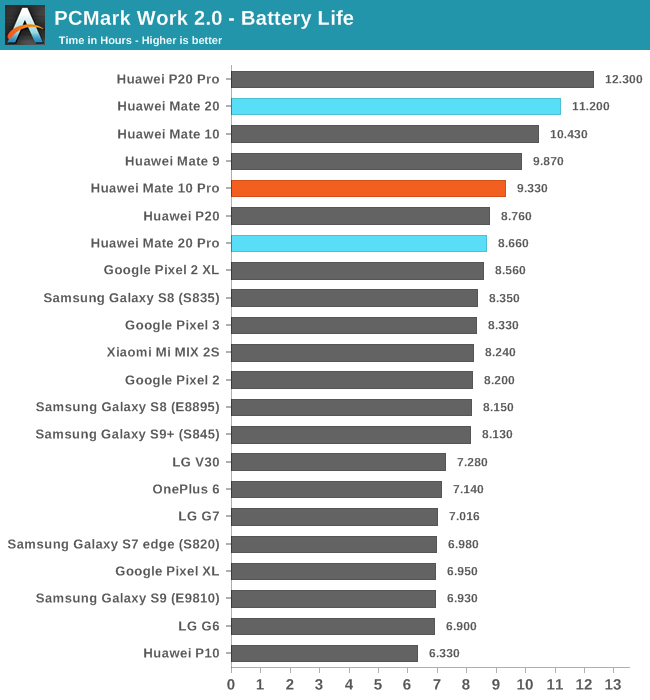
In PCMark, we see a similar regression on the part of the Mate 20 Pro – the regular version is achieving excellent results. Here the test is favourable to OLED devices, as evidenced by the P20 Pro leading all our results, however again this increase base power consumption of the Mate 20 Pro costs it a lot of lifetime which ends up it having much reduced battery life compared to where the SoC and battery capacity should have been capable of.
Overall, there’s two conclusions here in regards to battery life:
The Mate 20 is just an outstanding device and is currently showcasing absolutely leading battery life. Most devices with such runtimes are lower or mid-range phones with large battery capacities. In the high end, the Mate 20 is essentially in a tier of its own as it achieves this excellent battery life result while also showcasing the best performance of an Android device.
The Mate 20 Pro’s result and conclusion is a bit more muted. Its battery life isn’t bad, but falls short of expectations. Here the 4200mAh battery serves as no more than to just compensate for the inefficient display.
Camera - Daylight Evaluation - Wide Angle, Zoom, & Scenic
The Mate 20’s rear cameras between the two phone models represent 6 different modules and sensors. The Mate 20 Pro’s main cameras share a lot of similarities to the P20 Pro: Here we see the same custom 40MP sensor from Sony with a f/1.8 lens. This main sensor has quite small 1µm pixels, but because of the extremely large resolution the sensor itself is the biggest you can find in a mainline smartphone, coming in a 1/1.7” format, much larger than the usual 1/2.3” formats usually find in today’s flagship smartphones. The 40MP resolution is a bit tricky though, as this capture mode is only available if you specifically select it, which in turn disables usage of the other camera modules. By default, Huawei uses 2x2 pixel binning to capture 10MP shots with vastly increased dynamic range, with the sensor essentially acting as if it would have 2µm pixels.
The optical zoom module on the Mate 20 Pro is also the same as on the P20 Pro: A 3x telephoto lens with an 8MP f/2.4 sensor. This is also the only module which has OIS, as the main sensor is too big to include the mechanism and it just relies on EIS. The telephoto lens is able to work alongside the main 40MP sensor with a 1:1 pixel crop of a scene between the two sensors, in order to generate a “Hybrid zoom” factor of up to 5x by using a software interpolation technique.
The big new addition to what is essentially the P20 Pro’s camera system is a new 20MP f/2.2 ultra-wide angle module. Until recently, LG has always been exclusively the one vendor offering wide-angle lenses.
The regular Mate 20 is simpler in terms of its camera system. Here the main shooter is a regular 12MP unit with an f/1.8 aperture, with a sensor most similar to other flagships (I wasn’t able to confirm the pixel pitch). We have a similar 8MP f/2.4 telephoto lens, but here the zoom factor is just 2x, as opposed to 3x of the Mate 20 Pro.
Finally, the Mate 20 also includes a wide-angle camera, but uses a different sensor than the Mate 20 Pro. This one comes in at 16MP, and also has an ever so slightly narrower field-of-view at a 17mm equivalent focal length as opposed to the 16mm wide angle of the Mate 20 Pro.
What is lacking on both modules that was a main-stay for Huawei devices for the last few generations of models is the monochrome sensor. This unit was previously used to increase dynamic range as well as served as a second module for hybrid zoom modes. I’m not exactly sure how its removal will affect the picture quality of the Mate 20’s, as its actual effect on picture quality on previous devices was also a bit unclear.
[ Mate 20Pro ] - [ Mate 20 ]
[ P20Pro ] - [ P20 ] - [ Mate 10Pro ]
[ Pixel 3 ] - [ Pixel 2 ] - [ Pixel XL ]
[ iPhone XS ] - [ iPhone X ] - [ Note9 ] - [ S9+ ]
[ S8 ] - [ LG G7 ] - [ LG V30 ] - [ OnePlus 6 ]
[ OPPO FindX ] - [ MIX2S ]
In the first scene, we make full use of the new triple camera setup of the Mate 20’s, shooting the same scene from the widest angle camera modules to the 5x zoom mode of the Mate 20 Pro.
Here the Mate 20 Pro showcases a very good result as it keeps a good balance in exposure. The Mate 20 follows closely in terms of composition, but I feel it does a slightly better job on the bricks of the building.
The zoom lens of the Mate 20 Pro is in a category of its own. The same module is used on the P20 Pro, and both phones provide outstanding telephoto quality. Although the hardware is the same, the processing is different as the Mate 20 Pro are more exposed result. I think the P20 Pro did a better job here, as we have more contrast in the details.
The wide angle shot of the Mate 20 Pro is pretty fantastic, with excellent exposure through the scene. Although the camera isn’t pixel perfect, there’s very little competition. The Mate 20’s wide angle shot is also good, but there’s an evident difference in detail sharpness on the building as well as the pavement, with the phone lagging behind the M20Pro. Both phones here showcase better performance than LG’s units, with vastly superior details throughout the scene.
[ Mate 20Pro ] - [ Mate 20 ]
[ P20Pro ] - [ P20 ] - [ Mate 10Pro ]
[ Pixel 3 ] - [ Pixel 2 ] - [ Pixel XL ]
[ iPhone XS ] - [ iPhone X ] - [ Note9 ] - [ S9+ ]
[ S8 ] - [ LG G7 ] - [ LG V30 ] - [ OnePlus 6 ]
[ OPPO FindX ] - [ MIX2S ]
In the second scene, the Mate 20 Pro’s 40MP shot looks similar in detail to the P20 Pro – however we see a longer exposure which brightens up the scene in a positive way. The 10MP shot allows for a greater dynamic range of the scene, and there’s a lot more contrast in the details such as in the trees in the background. Of course this comes at an overall great cost of details compared to the 40MP shot.
The Mate 20’s result is extremely similar in composition to the Mate 20 Pro’s – with just a few notable differences in the HDR processing mostly on the left part of the scene. Although the Mate 20 should in theory have more detail than the Mate 20 Pro’s 10MP mode, this is not the case here. The 12MP largely lags behind many phones in terms of detail, as things just seem a bit blurred out. At first glance I’m not sure if this is due to some processing, or of the sensor just doesn’t have the same spatial resolution and good DTI of competing modules.
In terms of the telephoto lens on the Mate 20 Pro, the phone remains unrivalled. The new unit did some odd processing on the foliage of this shot, and isn’t as accurate as the P20 Pro. Detail wise, they’re on par, and far ahead of any other smartphone.
The Mate 20’s 2x telephoto lens is also looking good composition wise, however closer inspection we again see that the foliage is quite blurred out compared to the results of the other 2x modules from for example the iPhones or the Galaxies. The sensor loses out a lot of the texture of the tiled roofs throughout the scene, which was visible on other phones, as well as on the Mate 20 Pro.
Finally, the wide-angle lenses on both phones are game-changers in terms of capture experience. Here we can only compare quality to LG’s phones, and the new Mate 20’s handily beat the G7 at its own game. The G7’s result is to bad here that I would deem it largely unusable. The Mate 20’s do very well, but it’s obvious that the Mate 20 Pro here did a lot more HDR processing as it shows a bit darker and more contrastful result.
[ Mate 20Pro ] - [ Mate 20 ]
[ P20Pro ] - [ P20 ] - [ Mate 10Pro ]
[ Pixel 3 ] - [ Pixel 2 ] - [ Pixel XL ]
[ Note9 ] - [ S9+ ] - [ S8 ] - [ LG G7 ] - [ LG V30 ]
[ OnePlus 6 ] - [ OPPO FindX ] - [ MIX2S ]
In this next scene, I was a bit disappointed to see the Mate 20 Pro’s result. Here the phone lags behind the P20 Pro’s sheer dynamic range, and gives a very different result for what should be the same camera sensor. The Mate 20 also produced a different result, and here the picture is more akin to the regular P20.
The wide-angle of the Mate 20 Pro did a much better result in dynamic range, and it’s not even a competition to the results of LG’s phones as the M20Pro is leagues ahead. Here I also noticed in the few shots I captured that the M20Pro varied a bit in its HDR processing, with a slight difference in exposure between two samples.
The Mate 20’s wide angle result didn’t fare as good, as it showcased much less dynamic range and also a flattening of the highlights, as seen in the trees on the hill.
[ Mate 20Pro ] - [ Mate 20 ]
[ P20Pro ] - [ P20 ] - [ Mate 10Pro ]
[ Pixel 3 ] - [ Pixel 2 ] - [ Pixel XL ]
[ iPhone XS ] - [ iPhone X ] - [ Note9 ] - [ S9+ ]
[ S8 ] - [ LG G7 ] - [ LG V30 ] - [ OnePlus 6 ]
[ OPPO FindX ] - [ MIX2S ]
The next shot on the main camera sensors, we again see the Mate 20 Pro post a very different composition to the P20 Pro, and it’s an overall downgrade in regards to exposure as well as colour balance. The M20Pro did produce much better details in the shadows of the valley, but this comes at a compromise of less defined details in the brighter parts.
The Mate 20’s result is also quite bad, resulting in an underexposed image with low highlights and extremely dark shadows. Overall I’m not too happy with the result here as it has a significant disadvantage to many other devices.
The Mate 20 Pro’s wide angle shot is excellent, although a bit too flat highlights of the foreground trees. This can be excused through the very good capture of the shadows in the valley. The Mate 20 also managed to beat LG’s blurry result, however the exposure and dynamic range is not nearly as good as on the Mate 20 Pro.
[ Mate 20Pro ] - [ Mate 20 ] - [ P20Pro ] - [ P20 ]
[ Mate 10Pro ] - [ Pixel 3 ] - [ Pixel 2 ] - [ Pixel XL ]
[ iPhone XS ] - [ iPhone X ] - [ Note9 ] - [ S9+ ] - [ S8 ]
[ LG G7 ] - [ LG V30 ] - [ OnePlus 6 ] - [ OPPO FindX ] - [ MIX2S ]
In the next scene which was under cloud cover, and is a lot easier for many phones to capture, the Mate 20 Pro again shows quite a considerable difference to the P20 Pro. Here the P20 Pro’s brighter exposure is better, and it also manages to retain a lot more of the shadow details of the statues.
The Mate 20 shot is acceptable, and is an improvement on the Mate 10 and regular P20, however it very much lacks in detail. Here it’s a lot more obvious that the issue at hand is software based, and there’s an apparent noise reduction algorithm trying to do work on the textures of the stone throughout the scene, creating a bit of a mess compared to the Mate 20 Pro, and especially to other devices such as the Galaxy S9 or iPhone XS where this difference is most blatantly visible against.
Camera - Daylight Evaluation - Dynamic Range
Moving on to scenes that are most consistently in need of good HDR processing:
[ Mate 20Pro ] - [ Mate 20 ] - [ P20Pro ] - [ P20 ]
[ Mate 10Pro ] - [ Pixel 3 ] - [ Pixel 2 ] - [ Pixel XL ]
[ iPhone XS ] - [ iPhone X ] - [ Note9 ] - [ S9+ ] - [ S8 ]
[ LG G7 ] - [ LG V30 ] - [ OnePlus 6 ] - [ OPPO FindX ]
[ MIX2S ]
The first shot is the first one where the Mate 20 Pro finally seems to do better than the P20 Pro, with brighter shadows in the background of the cove. Oddly enough, the regular Mate 20 here does an even better job in this regard.
In the wide shot, the Mate 20 Pro yet again manages to produce a much wider dynamic range image than the Mate 20. Here the processing not only is able to bring out better shadows, but also does a significantly better job on the cobblestones’ textures. Both Mate phones again handily beat the result from LG’s phones.
[ Mate 20Pro ] - [ Mate 20 ] - [ P20Pro ] - [ P20 ]
[ Mate 10Pro ] -[ Pixel 3 ] - [ Pixel 2 ] - [ Pixel XL ]
[ iPhone XS ] - [ iPhone X ] - [ Note9 ] - [ S9+ ] - [ S8 ]
[ LG G7 ] - [ LG V30 ] - [ OnePlus 6 ] - [ OPPO FindX ]
[ MIX2S ]
This is another scene where the Mate 20 Pro does better than the P20 Pro, being able to tone down the highlights of the sky to expose the cloud textures as well as brighten up the shadows more than the sibling device. I feel as though this has a cost in terms of detail as we don’t see as good retention as on the P20 Pro throughout the scene’s foliage and stonework.
The Mate 20 produces a very similar shot in terms of overall composition, but loses out in terms of dynamic range in the darkest shadows. In terms of detail, it’s better over the Mate 20 Pro in the centre tree, but loses out in background detail.
While both phones do an acceptable job in terms of the composition, they could be just a little brighter. Here I think the iPhone XS leads the pack in terms of best exposure.
On the wide angle shots, the Mate 20 Pro again a better dynamic range and exposure than the Mate 20, as the latter is too dark. I do feel the M20Pro’s colour temperature of this shot is a bit too warm, but other than that the phone pretty much stands alone in terms of wide-angle quality, as LG’s G7 yet again produces a pretty atrocious image.
[ Mate 20Pro ] - [ Mate 20 ] - [ P20Pro ] - [ P20 ]
[ Mate 10Pro ] - [ Pixel 3 ] - [ Pixel 2 ] - [ Pixel XL ]
[ iPhone XS ] - [ iPhone X ] - [ Note9 ] - [ S9+ ] - [ S8 ] - [ LG G7 ]
[ LG V30 ] - [ OnePlus 6 ] - [ OPPO FindX ] - [ MIX2S ]
Moving on to the next scene, we find again the Mate 20 Pro producing a very different image to the P20 Pro – to the detriment of the new model, at least in my opinion. Here both the Mate 20 Pro and Mate 20 produce extremely similar results, but both have the result of favouring to push their dynamic range towards the darker parts of the image, where they do better than the P20 Pro, however this comes at a cost of a more blown out sky.
On the wide angle lens, the Mate 20 Pro again produces a much better and high dynamic range result than the Mate 20. The overall result of the M20Pro is just very good, and both phones fare significantly better than LG again.
[ Mate 20Pro ] - [ Mate 20 ] - [ P20Pro ] - [ P20 ]
[ Mate 10Pro ] - [ Pixel 3 ] - [ Pixel 2 ] - [ Pixel XL ]
[ iPhone XS ] - [ iPhone X ] - [ Note9 ] - [ S9+ ] - [ S8 ] - [ LG G7 ]
[ LG V30 ] - [ OnePlus 6 ] - [ OPPO FindX ] - [ MIX2S ]
In this shot, I think the Mate 20 does a better job than the Mate 20 Pro, as the exposure composition feels a lot closer to reality. Here the M20Pro again sees very different processing to the P20Pro, but the differences mostly lie in the colour renditions, and the Mate 20 Pro does better in resulting in more natural colours.
The wide angle lens on the Mate 20 Pro is again pretty fantastic, essentially standing on its own in terms of quality. The Mate 20’s shot is again less exposed with less dynamic range. Again both phones beat out LG’s results, although the V30’s colour temperature was the most accurate.
[ Mate 20Pro ] - [ Mate 20 ] - [ P20Pro ]
[ P20 ] - [ Mate 10Pro ] - [ Pixel 3 ] - [ Pixel 2 ]
[ Pixel XL ] - [ iPhone XS ] - [ iPhone X ] - [ Note9 ] - [ S9+ ]
[ S8 ] - [ LG G7 ] - [ LG V30 ] - [ OnePlus 6 ] - [ OPPO FindX ]
[ MIX2S ]
The next scene is a bit of a double-edged sword for the Mate 20’s, and both provide quite different results. The Mate 20 Pro produces a much higher dynamic range image than the P20 Pro, however this flattens the image quite a lot more than it should have. Here the iPhone XS and Pixel 3 were the nearest in terms of the actual lighting of the scene. The Mate 20 does better in this regard, and maintains better contrast throughout the image.
Switching over to the wide-angle lens, we see the Mate 20 Pro regain significantly more contrast, and again the overall result looks great. Comparing it to the Mate 20’s wide module, the latter again showcases a darker picture with less dynamic range.
[ Mate 20Pro ] - [ Mate 20 ] - [ P20Pro ]
[ P20 ] - [ Mate 10Pro ] - [ Pixel 3 ] - [ Pixel 2 ] - [ Pixel XL ]
[ iPhone XS ] - [ iPhone X ] - [ Note9 ] - [ S9+ ] - [ S8 ]
[ LG G7 ] - [ LG V30 ] - [ OnePlus 6 ] - [ OPPO FindX ] - [ MIX2S ]
The last daylight scenario is again pretty varied in terms of brightness levels, contains bright highlights in the trees as well as darker shadow elements. For some unfortunate reason, the P20 Pro was out of focus in this shot, which means we can’t do a proper direct comparison to the Mate 20 Pro. The new phone though did seem to produce a flatter image, and although the dynamic range and shadow retention is excellent, I feel like it needed more contrast. The regular Mate 20 does provide more contrast, but comes at a cost of shadow detail, so both phones are producing images in two different directions.
Finally, the last wide angle shot is again a massive win for the Mate 20 Pro, showcasing again extremely good overall dynamic range retention. It loses out details in the shadows, but that’s about the only negative for the shot. As we’ve now seen in the vast majority of scenes, the Mate 20’s wide shot again produces a flatter, less exposed image. Again, big picture quality advantages over LG’s wide angle shooters.
Daylight Conclusion
Overall the Mate 20 and Mate 20 Pro are two quite different phones when it comes to their still image cameras.
Starting off with the Mate 20 Pro, Huawei’s choice to reuse the same type of sensor as on the P20 Pro brings with it the same advantages and disadvantages. In daylight scenarios, the disadvantages outweigh the advantages. Like on the P20 Pro, the big sensor’s 40MP resolution is very rarely actually useable – the camera in this mode just lacks enough dynamic range in its shots and most of the time the resulting composition just isn’t good enough – although in perfect conditions it can vastly outperform many cameras.
In the 10MP mode, the sensor is able to take advantage of sensor-ISP based HDR processing with each pixel in the 2x2 bin using a different exposure to create a better image. This is still unique to the Mate 20 Pro and P20 Pro, however I feel like we’ve seen an overall regression in the overall processing when compared to the P20 Pro. Here the Mate 20 Pro still produces good images, but they don’t seem to have the same kind of leap that the P20 Pro had. It’s possible Huawei will iterate on its software processing here and try to bring in better results over time. In the end, I come to the same conclusion as on the P20 Pro: Because you’ll have to use the 10MP mode anyway, I feel like the phone would have been better off with a more traditional sensor along with OIS. Here the iPhone XS and Galaxy S9 sensors just have a significant advantage in spatial resolution at the same time as having great dynamic range.
In terms of telephoto modules, the Mate 20 Pro and P20 Pro still remain unmatched. Again here the processing between the two is quite different, and in some cases I prefer the P20 Pro’s results more.
On the Mate 20, the main camera is also a bit of a let-down. Here there’s no fancy sensor which can help it gain picture quality advantages. Unfortunately it lags behind most other phones in terms of dynamic range as well as detail. The processing was also problematic in some scenes, where there’s an evident noise reduction algorithm blurring out details and textures. It’s still a good and solid camera overall, but doesn’t manage to stand out compared to other high-end flagships.
The 2x telephoto lens of the Mate 20 is about on par with other phones, with again the drawback being less defined details that are seemingly caused by the image processing.
For both the Mate 20 and Mate 20 Pro, the standout features are meant to be the wide-angle camera modules.
For the Mate 20 Pro, this is a great hit and produces excellent images. Taking shots with much larger field of view is definitely a different type of experience, and is a great addition to the phones. The Mate 20 lags behind the Pro in terms of image quality, as its wide angle shots were always less exposed and offered less dynamic range. In terms of the competition, Huawei really only had to beat LG and its own game, and this it handily did. Unfortunately LG doesn’t seem to be fixing the image processing on the G7 any time soon, and while I didn’t have the V40 in this camera comparisons, it also largely shows the same issues as on the G7, with the Mate 20’s picture quality ending up being massively superior.
Camera - Low Light Evaluation - Night Sight
Low-light capture was a forte for Huawei this year, as they were the first to introduce a low-light mode that was able to capture vastly superior exposure shots without having to use a tripod. The results on the P20’s were excellent, so let’s see how the new Mate 20’s fare.
[ Mate 20Pro ] - [ Mate 20 ] - [ P20Pro ]
[ P20 ] - [ Mate 10Pro ] - [ Pixel 3 ] - [ Pixel 2 ]
[ Pixel XL ] - [ iPhone XS ] - [ iPhone X ] - [ Note9 ] - [ S9+ ] - [ S8 ]
[ LG G7 ] - [ LG V30 ] - [ OnePlus 6 ] - [ OPPO FindX ] - [ MIX2S ]
In the first scene, the Mate 20 Pro goes off to a bad start as noted focus issues when capturing the scene. Here the phone multiple times took out of focus captures, with none of my night mode shots actually ending up in focus. In the regular mode, the Mate 20 Pro’s camera switches over to its unique high ISO mode and is able to deliver great results at ISO25600. We have to remember that the phones don’t actually have OIS, so again like on the P20 Pro this is quite remarkable. Also a big change compared to the P20 Pro is the colour rendition, here the Mate 20 Pro is able to extract much better colours out of the scene, and all while reducing noise significantly.
The Mate 20’s regular mode isn’t all that impressive as pretty much in line with how most sensors behave in low light. Here turning on Night mode is a requirement, and greatly improves the picture quality.
Google’s new Night Sight mode outmatches Huawei’s phones in terms of light capture, noise and detail retention, however the images is so bright that it’s less natural than the Mate’s results.
[ Mate 20Pro ] - [ Mate 20 ] - [ P20Pro ] - [ P20 ]
[ Mate 10Pro ] - [ Pixel 3 ] - [ Pixel 2 ] - [ Pixel XL ]
[ iPhone XS ] - [ iPhone X ] - [ Note9 ] - [ S9+ ] - [ S8 ]
[ LG G7 ] - [ LG V30 ] - [ OnePlus 6 ] - [ OPPO FindX ] - [ MIX2S ]
The second scene the Mate 20 Pro does a very different exposure to the P20 Pro, the latter did a much more accurate representation of the brightness and colour temperature of the sodium street lamps. Turning on night mode improved things a lot for both phones.
Overall the Mate 20’s are among the best low light shooters thanks to night mode, only recently dethroned by Google’s Pixel phones.
[ Mate 20Pro ] - [ Mate 20 ] - [ P20 ]
[ Mate 10Pro ] - [ Pixel 3 ] - [ Pixel 2 ] - [ Pixel XL ]
[ iPhone XS ] - [ iPhone X ] - [ Note9 ] [ S9+ ] - [ S8 ]
[ LG V30 ] - [ OnePlus 6 ] - [ OPPO FindX ]
The next scene the Mate 20 Pro varies in its results while in auto mode. The first shot has better dynamic range and also better detail retention, here Huawei needs a way to keep things more consistent. The regular mode on the Mate 20 is also good, although it’s lacking in texture detail as well showing some very weird blur in the right part of the image. Here I think the lack of OIS is hampering the phones.
Turning on night mode again improves the quality, but again the regular Mate 20 is giving out some blurred results here as its multi-frame stacking doesn’t seem to work correctly.
I would say the Mate 20 Pro along with the Pixel’s Night Sight modes are leading closely together.
[ Mate 20Pro ] - [ Mate 20 ] - [ P20Pro ] - [ P20 ]
[ Mate 10Pro ] - [ Pixel 3 ] - [ Pixel 2 ] - [ Pixel XL ]
[ iPhone XS ] - [ iPhone X ] - [ Note9 ] - [ S9+ ] - [ S8 ]
[ LG G7 ] - [ LG V30 ] - [ OnePlus 6 ] - [ OPPO FindX ] - [ MIX2S ]
Partial blurriness is again an issue of the Mate 20 in this scene. The Mate 20 Pro doesn’t have any issue in this regard, and captures the best regular mode shot among all phones.
Switching to night mode, it brightens up things for both units, and also resolves the blurriness issue on the Mate 20. Although Huawei’s phones are showcasing more realistic exposures, the Pixel phones night mode outclass them in terms of detail retention.
[ Mate 20Pro ] - [ Mate 20 ] - [ P20Pro ] - [ P20 ]
[ Mate 10Pro ] - [ Pixel 3 ] - [ Pixel 2 ] - [ Pixel XL ]
[ iPhone XS ] - [ iPhone X ] - [ Note9 ] - [ S9+ ] - [ S8 ]
[ LG G7 ] - [ LG V30 ] - [ OnePlus 6 ] - [ OPPO FindX ] - [ MIX2S ]
This scene again showcases some big blur issues on the regular Mate 20’s auto shots that are only resolved by turning on night mode. The Mate 20 Pro’s auto mode here produces the most natural result out of all phones.
In night mode, things brighten up a bunch, and Huawei manages much better results than other devices, but is yet again beat by Google’s new software.
Extreme low-light
Extreme low light scenarios is something as early as last year we wouldn’t have expected phones to be viable in. Again I started shooting such scenes earlier in the year when Huawei made its Night mode usable without a tripod – along with vendors like LG introducing pixel binning modes that quadruple the light capture of the sensors.
[ Mate 20Pro ] - [ Mate 20 ] - [ P20Pro ] - [ P20 ]
[ Mate 10Pro ] - [ Pixel 3 ] - [ Pixel 2 ] - [ Pixel XL ]
[ iPhone XS ] - [ iPhone X ] [ Note9 ] - [ S9+ ] - [ S8 ]
[ LG G7 ] - [ LG V30 ] - [ OnePlus 6 ] - [ OPPO FindX ] - [ MIX2S ]
In extreme low light scenarios, the Huawei phones were in a league of their own until just very recently. The Mate 20 Pro in its regular mode relies on ISO25600 to achieve a very good shot, beating all other phones including the P20Pro. The Mate 20 doesn’t fare as well here as its sensor just can’t capture enough light.
In night mode, the Mate 20 Pro gains in sharpness and sheds some of the noise, and the Mate 20 now manages to sufficiently light up the scene, although sharpness and detail aren’t too good. Although the Huawei again have a better natural reproduction of the light in the scene, Google’s night sight just produces a just ridiculously brighter scene that offers significantly better details.
[ Mate 20Pro ] - [ Mate 20 ] - [ P20Pro ] - [ Mate 10Pro ]
[ Pixel 3 ] - [ Pixel 2 ] - [ Pixel XL ]
[ iPhone XS ] - [ iPhone X ] - [ Note9 ] - [ S9+ ] - [ S8 ]
[ LG G7 ] - [ LG V30 ] - [ OnePlus 6 ] - [ OPPO FindX ] - [ MIX2S ]
Finally, in the darkest possible conditions, in a path under the light of the moon, the Mate 20 Pro and P20 Pro are the only camera sensors able to capture anything, with the Mate 20 Pro using its maximum ISO102400 mode. The Mate 20 largely remains blind. Night mode on the Mate 20 Pro actually regresses things in these conditions, while on the Mate 20 it allows to finally make out some parts of the scene.
Again both phones are beat by Google’s new night sight, achieving some pretty astounding results.
Low-light conclusion
Overall in low light conditions, the Mate 20 Pro is a clear leader in terms of its hardware capabilities. Just like on the P20 Pro, the massive sensor as well as is high ISO capabilities prove very beneficial for the phone.
The Mate 20 fared less well in regular mode, and underperforms most other flagships. Here the use of night mode is a requirement to get better shots out of the phone.
Up until recently this would have been the end of my conclusion, but the recent introduction of Google’s new night sight mode means that Huawei no longer is the best in low-light conditions. While I do feel that Google is overdoing it a bit and Huawei still produces the more realistic and representative exposures, the Pixel phones just have a tremendous detail and noise reduction advantage. Still, this is not to take away from Huawei’s great low-light performances, as it still stands above that of many other devices.
Camera Video Recording
Video recording have traditionally been a great weakness for Huawei, and the Mate 20’s feature the same type of issue that also plagued past Mate and P-series phones: the lack of OIS on the main camera modules. Furthermore, I was surprised to see that the video encoding block of the Kirin 980 caps out at 4K30, far lower than the competition from Qualcomm and Samsung.
Because the Mate 20’s feature wide-angle camera modules, this essentially doubles the amount of video samples we have to analyse. In terms of recording modes Huawei offers a slew of resolution from 720p to 4K30 – we’ll be limiting ourselves to the more popular 1080p30, 1080p60 and 4K30 modes. Video recording can be done either in H264, or H265, and the phone defaults to H264 for better file compatibility.
Mate 20 Pro:
Mate 20:
On both the Mate 20 and Mate 20 Pro, the one thing that immediately stands out from past Huawei devices is that the video is a lot more stable. Both in 1080p30 and 4K30 (in which previously EIS wasn’t available on the Kirin 970), we see some really good results considering the fact that the phones don’t have OIS. Here Huawei and HiSilicon are obviously using a different EIS algorithm that is much more performant, and the phone actually this time around doesn’t let you disable it. What is interesting to see is that here and there there’s still a jutter in the image, and when this happens we see the very edges of the video sometime warp for a few frames. This is an indication that the EIS algorithm is quite lax in following the camera frame, and in sudden movements tries to compensate and stabilize the recorded video frame by warping the existing camera frame along the edges when necessary. The only real negative of this implementation is that the actual video recording is delayed by a split second, something that plainly visible when panning around – in practical terms this shouldn’t be an issue.
Where things break down is in the 60fps mode: Here there’s no stabilisation and the result is what you’d expect from a non-OIS phone. I do find it weird that Huawei stabilises 4K30, but not 1080p60, as the larger resolution mode should in theory represent a more difficult workload. Here it’s likely that the new EIS is latency rather than throughput bound at some point in the pipeline, either by the sensors, or maybe even on the SoC side.
Video recording in 60fps is also not optimal, here I think Huawei was far too conservative in terms of video encoding bitrate as the resulting video is of much less quality than the 1080p30 mode. Also weird is that in 60fps mode, the phone will now do to the telephoto lens, only allowing digital zoom. However, switching over to the wide angle lens works.
4K30 is of great quality on both phones: This is an immense upgrade compared to the previous generation Huawei devices, and although it doesn’t quite match the quality of say the recent iPhone XS’, video recording is no longer a thorn in the side of the phones.
Recording video on the wide angle lenses is a great experience: It feels a bit less stable than o the primary lens (The EIS has more actual distance to compensate), but overall this is something that I’ve been a great fan of in LG phones, and should be definitely something that I recommend many users to try out.
Exposure and dynamic range is good on both phones and both modules, again something that’s seen immense upgrades compared to past Kirin 970 devices. It’s only when switching between the modules that it seems like it’s necessary to readjust the exposure sometimes. In terms of switching between the modules, Huawei is still a bit slow in this regard. Apple and other Snapdragon devices are able to do this almost instantly, however it still takes a few seconds for the Mate 20’s, especially switching to the zoom modules.
Overall, Huawei’s video recording quality on the Mate 20’s has seen a significant jump. The most glaring issues of stabilisation and lack of dynamic range (HDR recording) have been mostly fixed, and while it’s still not quite the best of the best, the end result is now no longer a big negative for the phones.
Conclusion & End Remarks
For Huawei, the Mate 20s represent large improvements in the company’s flagship line-up. But as we've seen, there are some hiccups along the way.
Design-wise, both phones present new, interesting, and attractive designs. The Mate 20 follows the Mate 10 in terms of offering a slightly wider and bigger form-factor, but now gets rid of its bezels for an essentially full-screen experience, with the exception of a very minimalistic teardrop style notch which houses the front camera.
The Mate 20 Pro is more exciting for Huawei, as the design clearly departs from anything the company has produced before. It’s plainly obvious that the new phone took design cues from Samsung, as its overall build with the curved display as well as curved back are extremely reminiscent of Samsung’s S8 and S9 industrial designs. And I do think this works fantastically for the phone, as along with its slightly reduced size compared to the Mate 10 Pro, makes this one of the most ergonomic phones I’ve come to use. Design and ergonomics aren’t just its strengths, as Huawei was also able to build an extremely solid feeling phone, which I think represents Huawei’s best hardware to date.
The Mate 20 Pro also differentiates itself in terms of its unlocking methods: While the Mate 20 has a regular capacitive fingerprint sensor on the back, the Mate 20 Pro integrates an under-screen fingerprint sensor. I felt like this implementation on the software side was a bit unfinished, as it lacked any kind of feedback, and while it was accurate, it wasn’t always the fastest.
Huawei also gives you the option to use face unlocking: The Mate 20 Pro integrates a wider display notch than the Mate 20; similarly to the iPhone X, Huawei’s new phone integrates a dot-projector, flood illuminator as well as an IR camera to achieve 3D face identification. For me this worked pretty flawlessly and the recognition speed is extremely fast.
The regular Mate 20 retains an LCD screen, and this generation comes with an RGBW layout. This can be a bit of a stretch for some people as the resolution has remained at 1080p, so it’s not the sharpest display at closer distances. While viewing angles and brightness of the display are great (for an LCD), the issue here lies more in its color calibration. Unfortunately there’s no way to get an “accurate” sRGB color mode without suffering from an overabundance of red, including reddish whites. Remaining in the “Vivid” mode on the other hand makes things oversaturated in most applications, while being too blue. Here Huawei does provide ways to adjust colors to your liking, but the mechanism isn’t able to achieve actually accurate colors.
On the Mate 20 Pro, Huawei instead uses an OLED screen. This isn’t the first one from the company, but it’s the first 1440p screen in a smartphone from Huawei. Unfortunately the display panel has some very obvious issues. The usual hue shift from different viewing angles in OLED displays is notably more pronounced on the Mate 20 Pro, much more than any other OLED screen I’ve come to use. It’s something that you can get used to, but I know some people are especially sensitive to this aspect of OLED phones.
The color calibration of the Mate 20 Pro is better than that of the Mate 20, here you can just set it to “Natural” mode and by default you’ll get a good D65 sRGB calibration. In Vivid mode, you’ll get a close Display P3 D65 approximation when using the “Warm” sub-mode. What did bother me more on accuracy is the fact that the display has large swings in brightness depending on content. This CABC mode cannot be disabled, and also seemingly can create some issues with gamma accuracy.
The worst aspect about the Mate 20 Pro screen is its power consumption: The review unit I tested uses an LG display (Huawei also dual-sources from BOE), and as we’ve seen in some other devices with LG OLED panels, the Mate 20 Pro also suffers from a battery regression because of this. To make things worse, HiSilicon had also confirmed that the SoC to display connection consists of dual MIPI lanes, as opposed to a single MIPI lane with compression, which is the more efficient way to achieve 1440p resolutions. Both these factors put the Mate 20 Pro’s battery life below where you would expect it to be.
Talking about battery life, these are two very different devices. The regular Mate 20 is pretty much the uncontested flagship smartphone when it comes to battery life. The new chipset’s increased efficiency, along with a very efficient screen and large battery capacity make for a killer combination when it comes to the longevity of the phone.
The Mate 20 Pro, while its battery life in absolute terms isn’t inherently bad, is below that of what you would expect when you consider it has a 4200mAh battery. Here the big battery and efficient SoC largely just compensate for the very inefficient screen.
The new Kirin 980 SoC is an outstanding new SoC. Finally, HiSilicon has been able to bring out a new generation flagship SoC that has manufacturing as well as IP in sync: The new 7nm process node along with the new Cortex-A76 CPUs bring an immense performance jump to the platform, all while improving energy efficiency. The Kirin 980 will serve as an excellent platform for Huawei and Honor’s 2019 lineup, and I’m sure it’ll remain extremely competitive with Qualcomm and Samsung’s next-gen offerings.
Camera-wise, Huawei seems to like to keep things quite complicated. Here we have to come to two conclusions on the Mate 20 Pro and Mate 20:
The regular Mate 20’s camera is largely unimpressive and struggles to differentiate itself much from the competition. Only in terms of processing does the phone have an edge sometimes, but other times it can also be a big negative as the we’ve seen the phone blur out details both in daylight and especially in low-light scenarios. The telephoto lens is about in line with the competition, but again sometimes can suffer the same lack of detail due to the processing. In low-light shots, night mode saves the Mate 20 from underperforming other flagships.
On the Mate 20 Pro, we largely see the same camera hardware as on the P20 Pro. The differences here were again in terms of the processing. Unfortunately more often than not, in daylight scenarios the Mate 20 Pro managed to capture slightly worse pictures than the P20 Pro, as it doesn’t always go into the same very high dynamic range mode as its predecessor. This is something that can be rectified by software, but it’s not a good start for the phone. The telephoto lens with its 3x optical and 5x hybrid zoom is still the best in the market, although again there’s processing differences to the P20 Pro which aren’t always positive. The core negative in daylight is again the fact that we have a 40MP sensor that in the vast majority of times is only really usable in its 10MP mode. Here I hope Huawei in the future goes with a more regular camera module setup, and includes OIS that can also then benefit video recording.
The key new feature of the new cameras are of course the wide angle lenses. Here Huawei did a great job, although there are differences between the two phones. The Mate 20 Pro’s 20MP camera sensor produces excellent results, and there’s really no competition here bar the regular Mate 20. Huawei only really had to beat LG here, and the latter’s image processing failure this year has made things very easy for the Mate 20’s. Shooting wide-angle pictures is really a different experience, and I’m personally a great fan of it. The regular Mate 20 still beats out LG in terms of quality, but its module doesn’t showcase as great of a dynamic range and detail as its more expensive sibling.
Both phones offer excellent low-light performance through their night modes, and are only recently outclassed by Google’s new night sight update for Pixel phones.
Overall, the Mate 20’s are a big step forward for Huawei. However, I feel like there’s some issues on the Mate 20 Pro that prevent it from really being an outstanding device. The Mate 20 Pro comes with a launch price of 1049€, and at this price range we really expect a no-compromise device. Unfortunatly, I feel like the issues with the display as well as only average battery life represent notable compromises. Supposedly the units with BOE screens have far fewer issues, but this isn’t much of an argument if you have to play the device lottery in order to get a good unit.
The regular Mate 20 makes for a much more interesting buy, and the one aspect where the phone just outright dominates is battery life. I’ve really no real substantial negatives about the phone, other than I wished its cameras performed a bit better. Here I think most buyers will be extremely happy with their purchase, and I think Huawei offers an overall good package.

